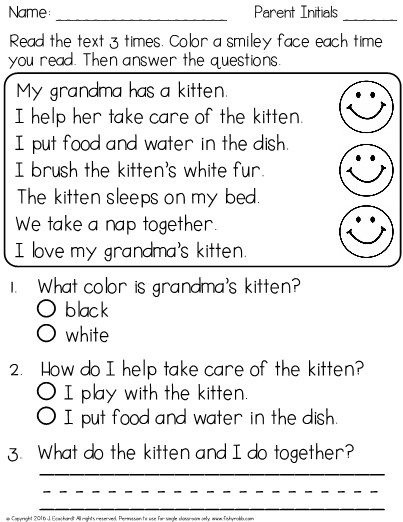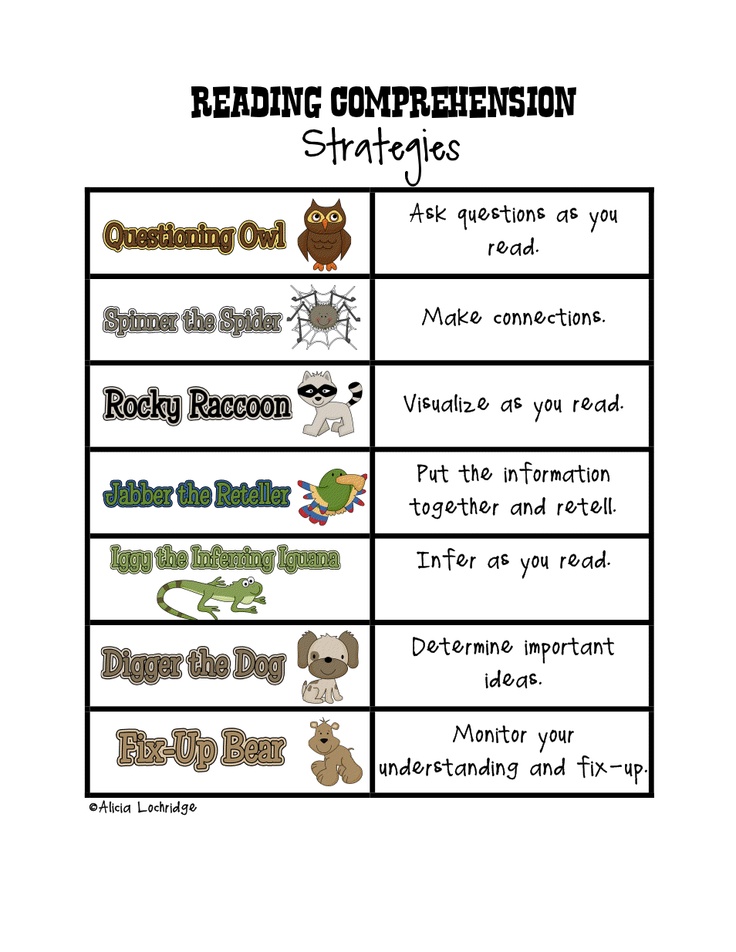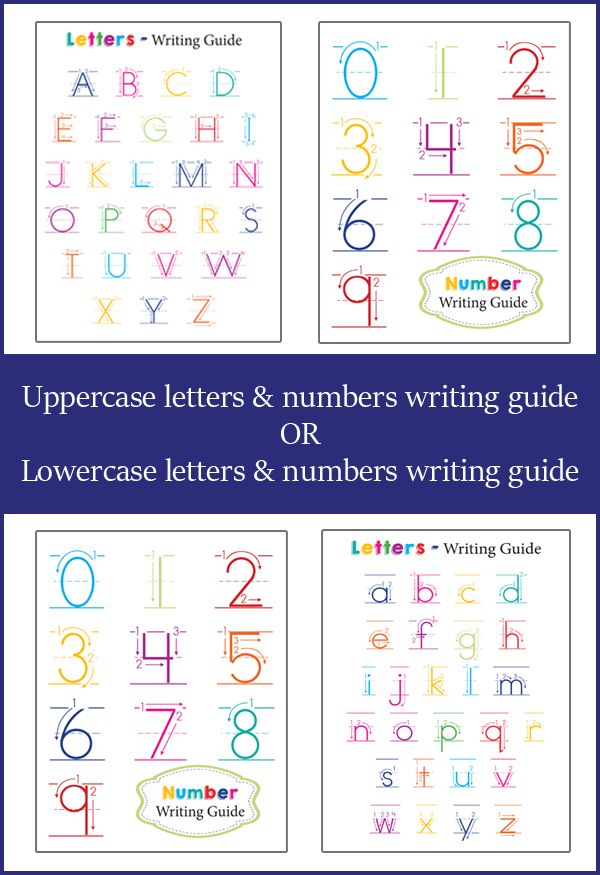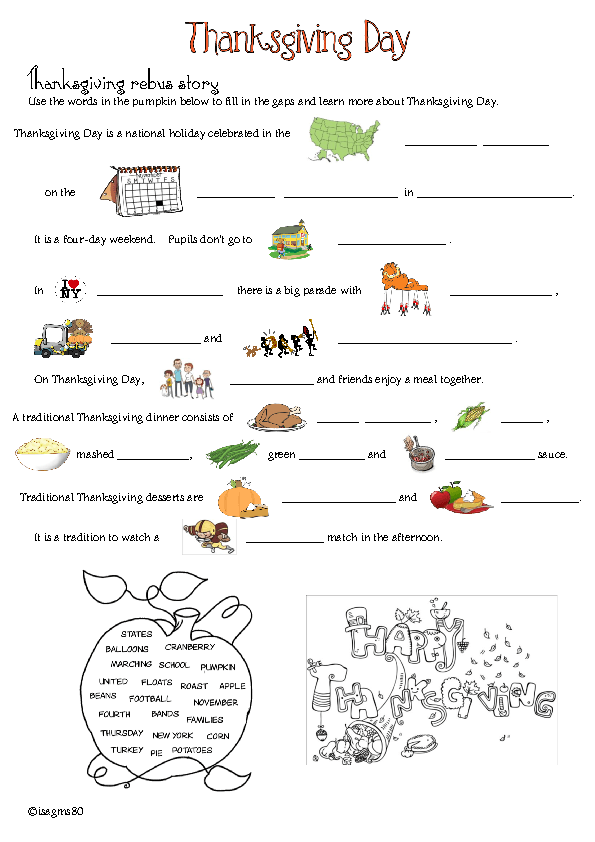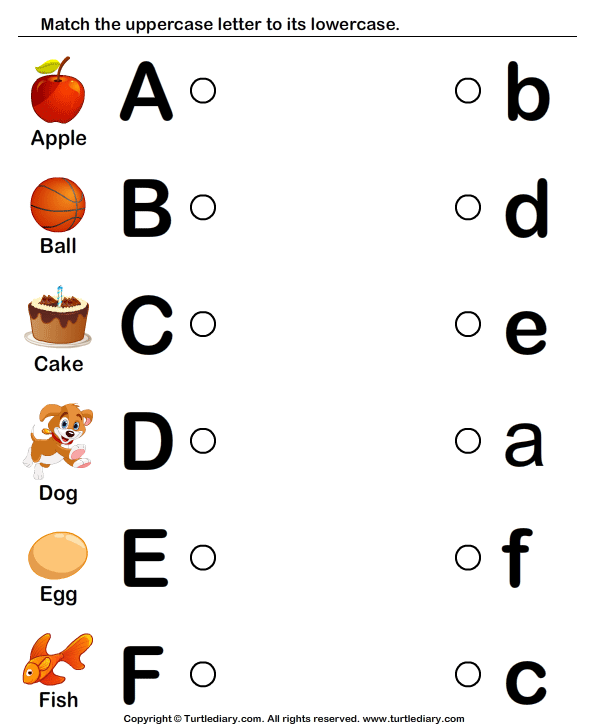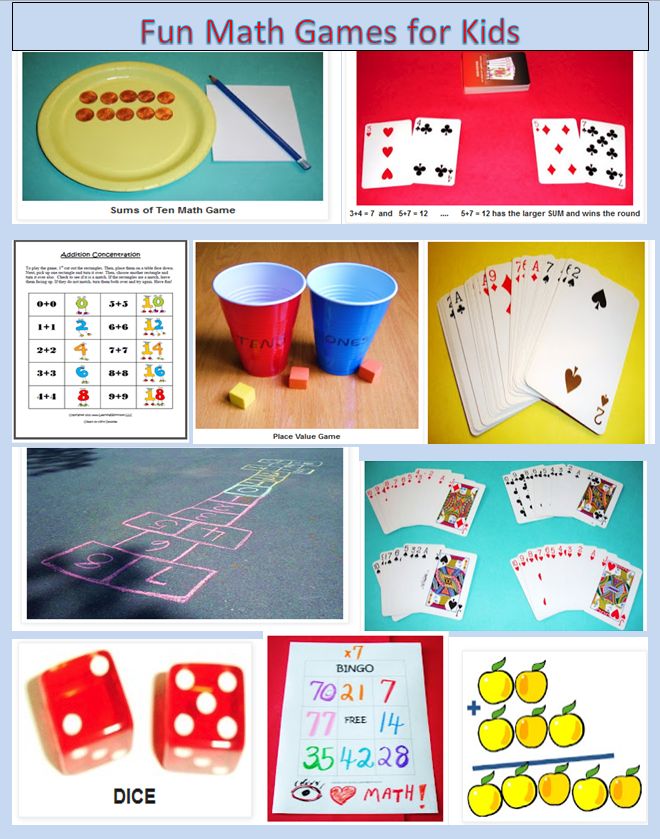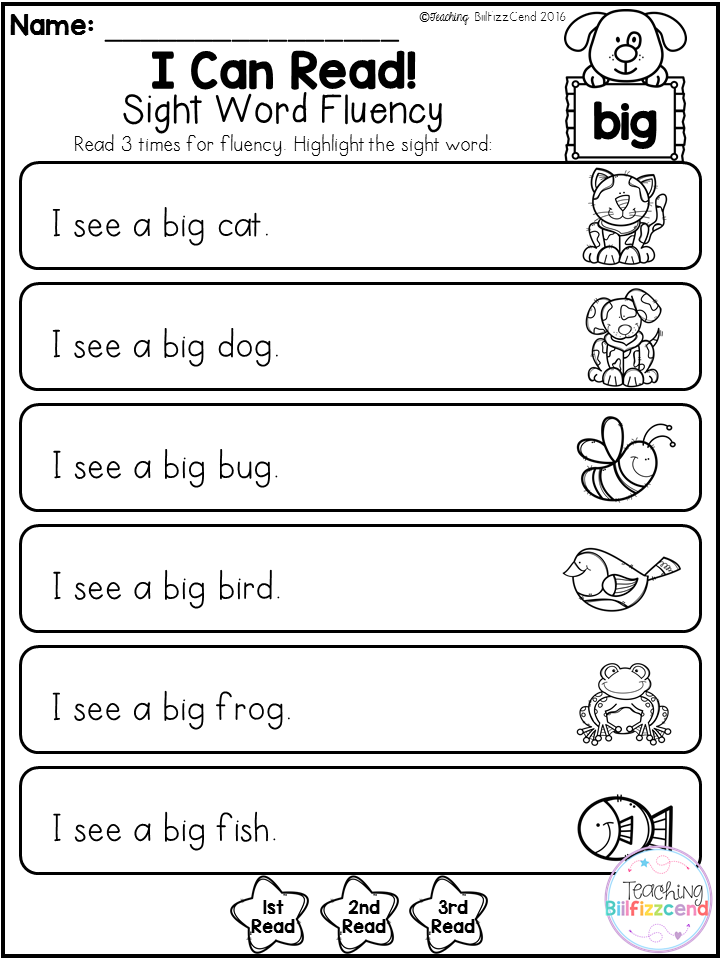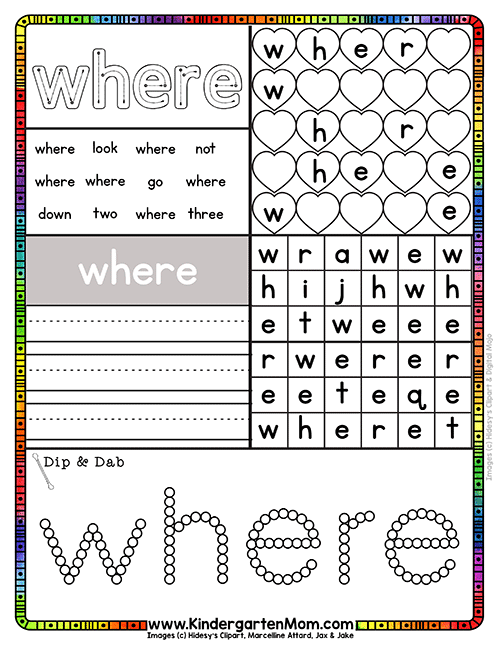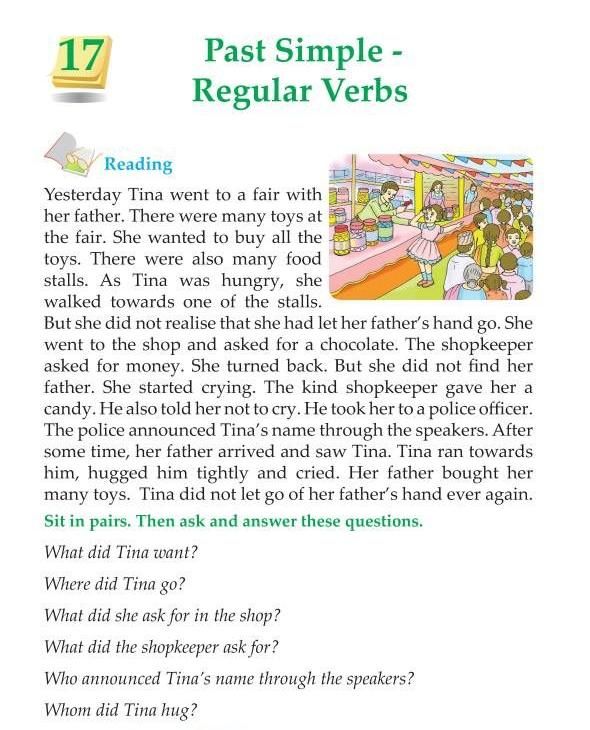Reading help for 1st grade
1st Grade Reading: What Parents Should Know & Tips for Success
It’s never too early to start building a lifelong love of reading — after all, stories are important no matter how old you are! Luckily, there are lots of ways you can help your little one develop their 1st grade reading skills as they dive into the wonderful world of books and stories.
As your child learns to read, they’re opening up a whole new world of information and developing skills that will help them learn for the rest of their life. Keep scrolling to find ways you can encourage and support them.
Foundations needed for 1st grade reading
First grade reading is important because it’s when students learn foundational skills they’ll use throughout the rest of their schooling. Many young readers benefit from focused reading strategies to help them build essential skills like vocabulary and reading comprehension.
First grade is also when kids start to discover a love of reading, independently or with an adult. They read simple stories on their own about subjects they’re interested in, or sit and listen as you read aloud with them.
To help encourage a love of reading, first graders should have key skills to help them as they move on to more complex stories and topics in later grades, including the ability to:
- Retell familiar stories
- Read aloud with grade-appropriate texts
- Find details that support an author’s main points
- Spot points of view and parts of a story while reading
- Identify sight words and high-frequency words in a text
- Sound out new words when they’re reading and spelling
- Read and write simple sentences about topics they’re interested in
- Know the names and sounds of letters, particularly vowels and consonant combinations
- Use strategies for decoding new words like context clues, vowel sounds and substitutions
- Use reading comprehension strategies like answering questions, retelling, identifying point of view and predicting
Tips for first graders' reading comprehension
While most of your child’s reading instruction happens at school, there are lots of ways you can encourage them to read at home and help build their reading comprehension skills.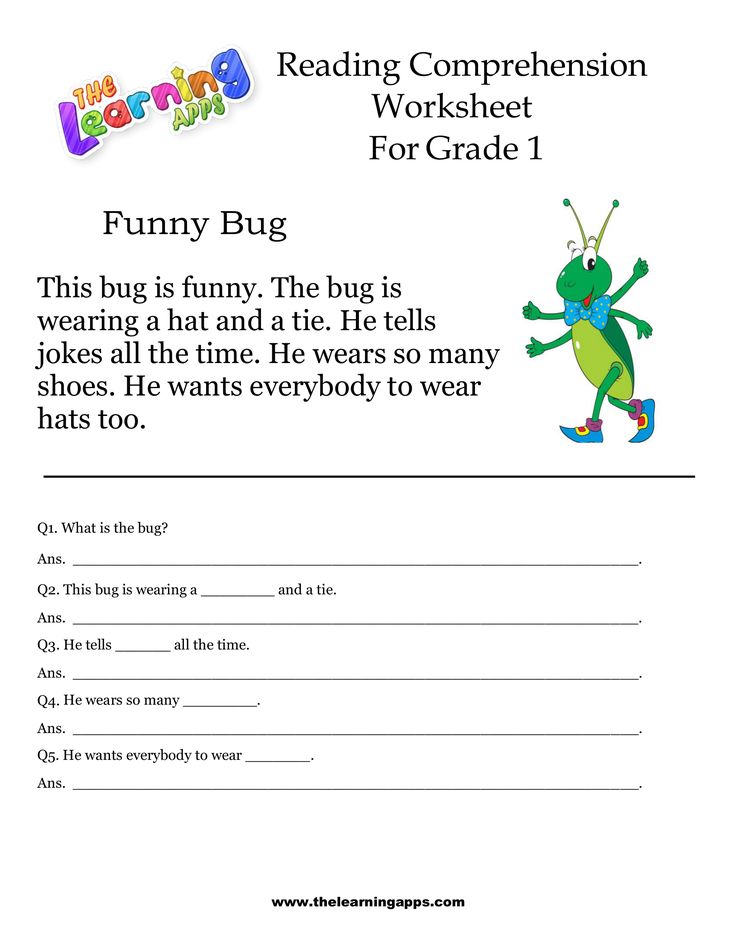
Ask your child’s teacher to recommend any free or low-cost resources they use in the classroom and be persistent in practicing with these strategies:
Identify the main ideas
In fiction and nonfiction, every story has a main idea. As you read with your child, ask them to tell you what they think the most important part of the story is and why.
Learn more about what they’re reading and interested in when you help them summarize the plot, find supporting details and retell the story. A simple conversation about what they’re reading can open new doors for age-appropriate discussions and insights.
Understanding sequencing
It’s important for first graders to understand that stories have a beginning, middle and end. Sequencing helps them practice story structure so they can understand the plot and even start writing their own simple stories!
Your child can practice sequencing when they retell the story, sort flashcards with different story points on them or draw pictures of different points in the story.
Learn elements of the story
A story doesn’t just have a beginning, middle and end — it also has genre, characters and setting.
Picture books with illustrations can help students sort out different characters and settings or help them talk about the stories they just read. Encourage your child to sort fiction from nonfiction, and talk to them about the plot or the characters they liked best.
Discern reality vs. fantasy
Even in first grade, kids should be able to discern reality from fantasy. As they read, ask your child if the author is telling a real or made-up story. How can they tell?
Figuring out the difference between fiction and nonfiction is an important basis for media literacy, and will eventually help children tell the difference between facts and opinions.
Draw conclusions
After the story’s over, the work’s not done — your child still has to figure out the meaning of the text and draw conclusions from it.
Encourage your child to pick out the main idea and identify whether it’s fact or fiction.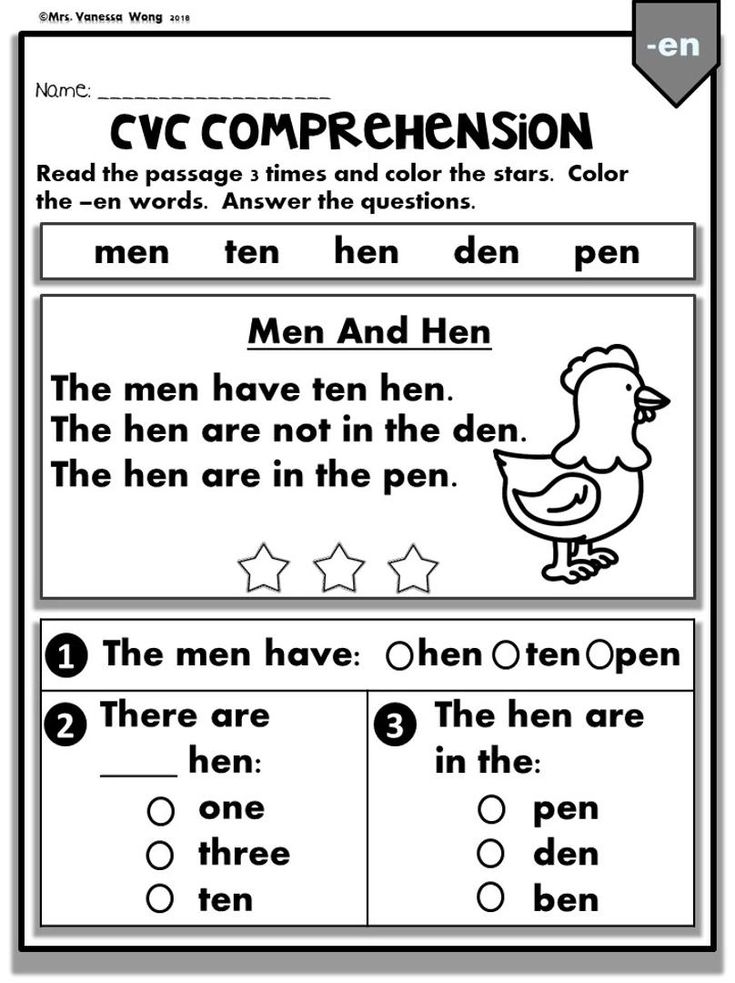 Then, you can work together to predict what happens after the story ends, or decide how the information they just learned relates to their own experiences.
Then, you can work together to predict what happens after the story ends, or decide how the information they just learned relates to their own experiences.
Online resources to help with first grade reading
Helping your child become an independent reader can feel like a daunting task. Luckily, there are lots of online resources to help!
Prodigy English
Prodigy English is a brand-new adventure designed to help kids build a love of English learning. As they play, they'll gather resources and answer curriculum-aligned reading and language questions.
Set in a unique world full of wishes and new characters, every correct answer gives your child more energy they can use to build items, earn coins and create a world just for them.
Create a free account today to get started!
Cost: In-game educational content free for students and teachers, optional Membership upgrade available
Sign up nowEpic
Epic is a digital reading platform with thousands of books for kids to choose from.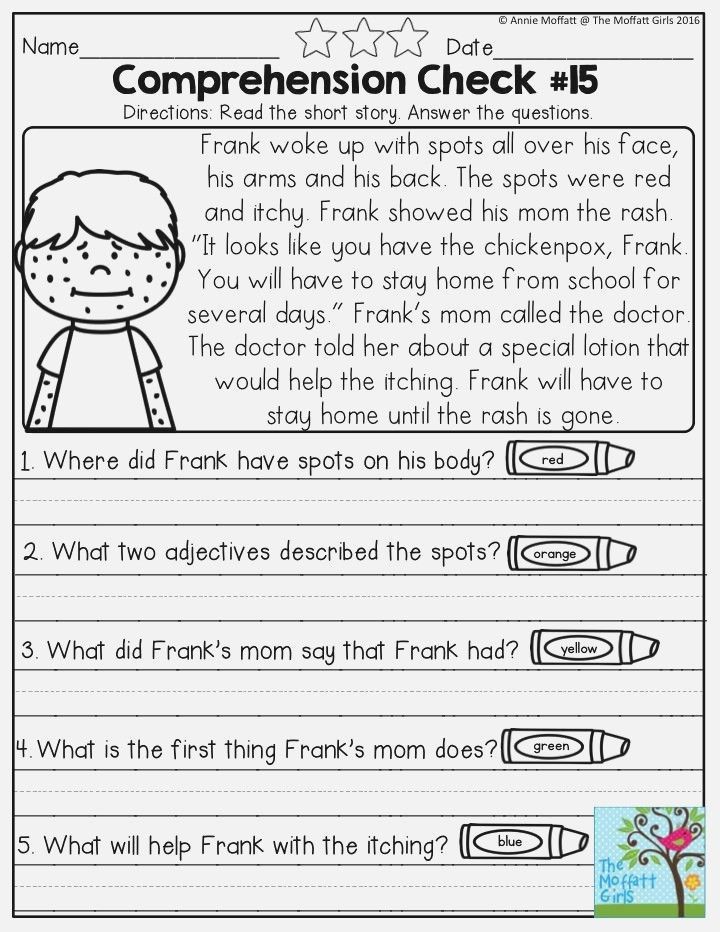 Whether they’re reading in the classroom or at home, it can help encourage independent reading and give your child access to books on any topic they’d like.
Whether they’re reading in the classroom or at home, it can help encourage independent reading and give your child access to books on any topic they’d like.
Cost: Free
Newsela
To help your child develop key reading skills, introduce them to Newsela! This site has lots of engaging content sorted by topic. It’s a great supplemental resource to compliment what your child is learning at school.
Cost: Free content, but most is hidden by a paywall
Sora
From the makers of Overdrive, Sora is a free reading app that lets students borrow books from local libraries and learn to read independently. Use it to read with your child or encourage them to read on their own.
Cost: Free with library card
Starfall
Starfall is a site filled with resources that teach reading through play and positive reinforcement. Created as an alternative to non-educational entertainment, Starfall offers free content as well as membership options that can replace reading worksheets for kids.
Cost: Free, some content behind a paywall
Storynory
Storynory is a site full of free audiobooks for kids who prefer to listen rather than read. Available online or as an app, Storynory focuses on classic authors, fairy tales and educational stories in an engaging audio format.
Cost: Free
14 Great books for first graders
Every child has their own abilities and preferences when it comes to reading — but there’s a book for everyone!
Whether they’re reading first grade books or moving on to second and third grade novels, these picture books and chapter books encourage them to practice key skills such as phonics, consonant blends, vowels and general reading comprehension.
1.
There’s an Alligator Under My Bed by Mercer MayerThis funny book tells the story of a little boy afraid of the alligator under his bed and his elaborate rituals to make it go away.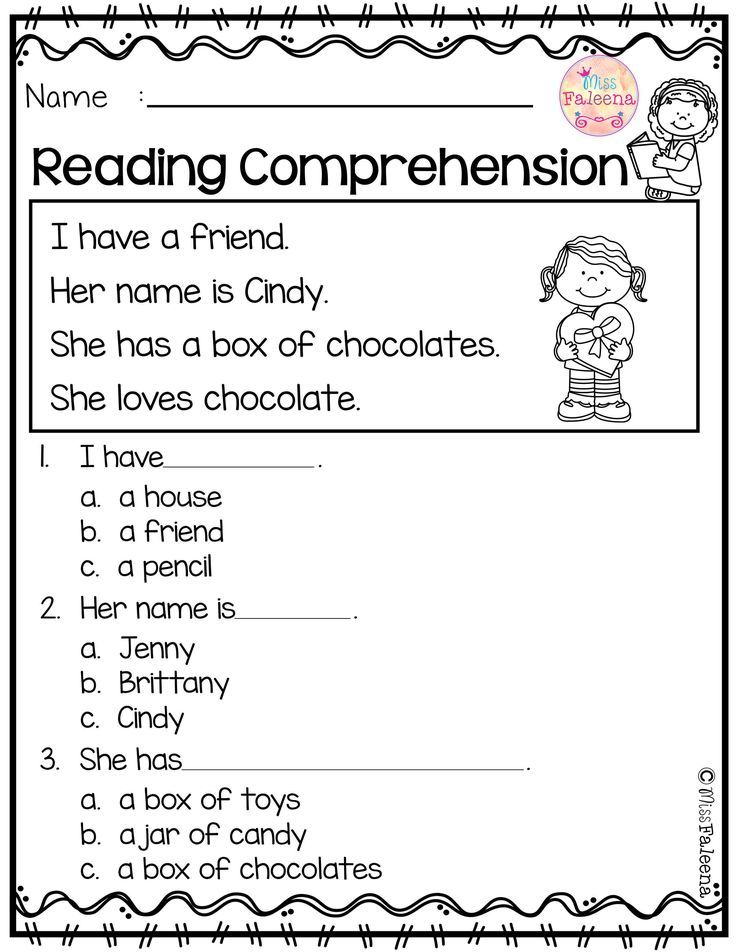 But is the alligator real?
But is the alligator real?
2.
Freckle Juice by Judy BlumeAndrew wants freckles like his best friend, and Sharon says her secret freckle juice will do the trick. Kids will have a hoot figuring out if the freckle juice is worth it.
3.
Ramona the Pest by Beverly ClearyRamona is starting kindergarten and she’s learning how to get along with other students. Laugh along as she makes mistakes and learns important lessons — and use it as a chance to learn about social-emotional skills with your little one.
4.
Hot, Hot, Hot by Neal LaytonOscar and Arabella, two Ice Age mammoths, love to play in the snow. When their world starts getting warmer, they have to get a little creative to stay cool.
5.
365 Penguins by Jean Luc FromentalA family finds a new penguin on their doorstep every day for a year. Read along as they figure out what’s going on and how to take care of all their new critters.
6.
Water Boy by David McPhailA special little boy overcomes his fear of water and finds amazing new powers. Read along as he discovers how to use them, and encourage your child to face their own fears.
Read along as he discovers how to use them, and encourage your child to face their own fears.
7.
Green Eggs and Ham by Dr. SeussIn this classic rhyming book, the narrator goes on zany adventures as he tries to avoid eating the dreaded green eggs and ham. Whether you’re reading with a fox or in a box, this book is a favorite for many children (and adults).
8.
Brown Bear, Brown Bear, What Do You See by Bill MartinThis board book is perfect for early readers just learning about words, shapes and colors. They’ll connect animals with colors and learn about all the wonderful things they can find in nature.
9.
Sheep in a Jeep by Nancy ShawThis crazy picture book lets readers follow along with a flock of sheep driving through the countryside — and all the trouble they get into along the way!
10.
When Will I Read by Miriam CohenLearning to read can be tricky at times. In this book, kids can follow along with the journey of a boy who’s learning to read and celebrate his (and their) success along the way.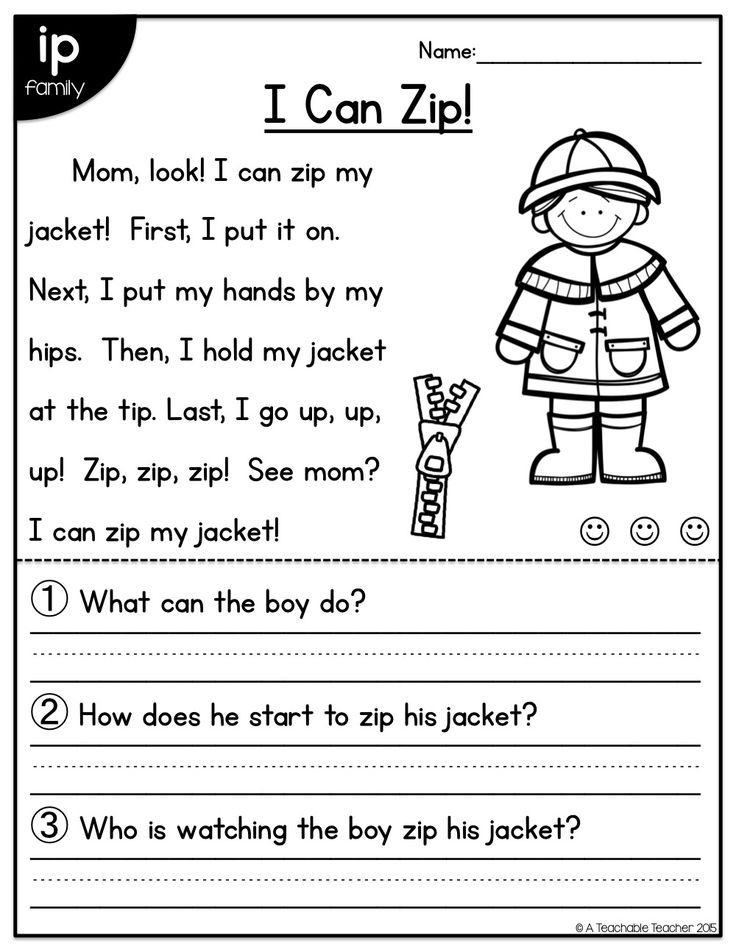
11.
This Moose Belongs to Me by Oliver JeffersWilfred has a pet moose named Marcel. But what happens when, in the woods, someone else claims Marcels as their own? This beautiful picture book explores themes of friendship in a fun, child-friendly way.
12.
Where Are You From by Yamile Saied Méndez and illustrated by Jaime KimA little girl asks her abuelo to help her tell people where she’s from. In the process, she learns an important lesson about self-acceptance and identity.
13.
If You Give a Mouse a Cookie by Laura Joffe NumeroffA hungry mouse shows up on your doorstep, and you give him a cookie. But what kind of crazy shenanigans will happen next? Kids will have a blast following along with this unlikely journey.
14.
The Giving Tree by Shel SilversteinThis book tells the story of a boy and the tree that always provides for him, no matter how old he is. Children will learn an important lesson about relationships, giving and love from celebrated poet Shel Silverstien.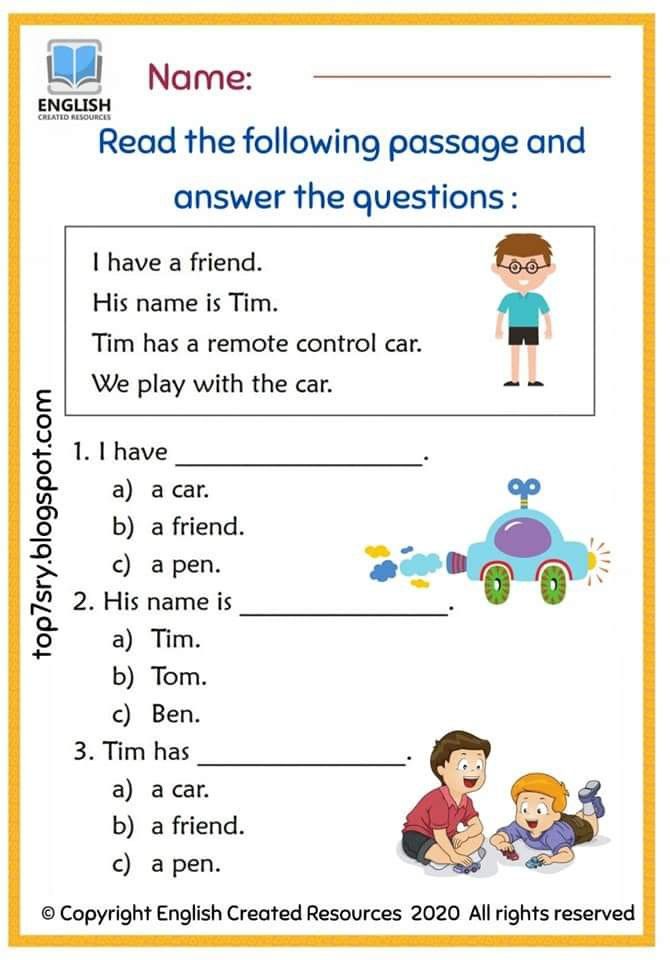
7 Fun 1st grade reading activities
Reading is great — but sometimes kids need a little variety. Use these activities to help first graders build positive, fun relationships with reading comprehension and build new skills!
1. Act out the story
Charades, pictionary, at-home theatrical productions — there are a lot of ways kids can tell you the story of what they’re reading, whether through play-based learning or more structured activities.
Retelling stories helps first graders grasp details like plot, characters and setting, and helps improve recall skills. Plus, it’s a lot of fun for you and for them!
2. Read poems together
Simple, popular poems can help kids delight in rhyming and give them new ways to think about the language they use everyday.
Some popular poems for kids include:
- “Wind on the Hill” by A.A. Mile
- “Life Doesn’t Frighten Me” by Maya Angelou
- Where the Sidewalk Ends, an anthology of children’s poems from Shel Silverstien
If you have a favorite poem, this is the perfect time to share it with your child.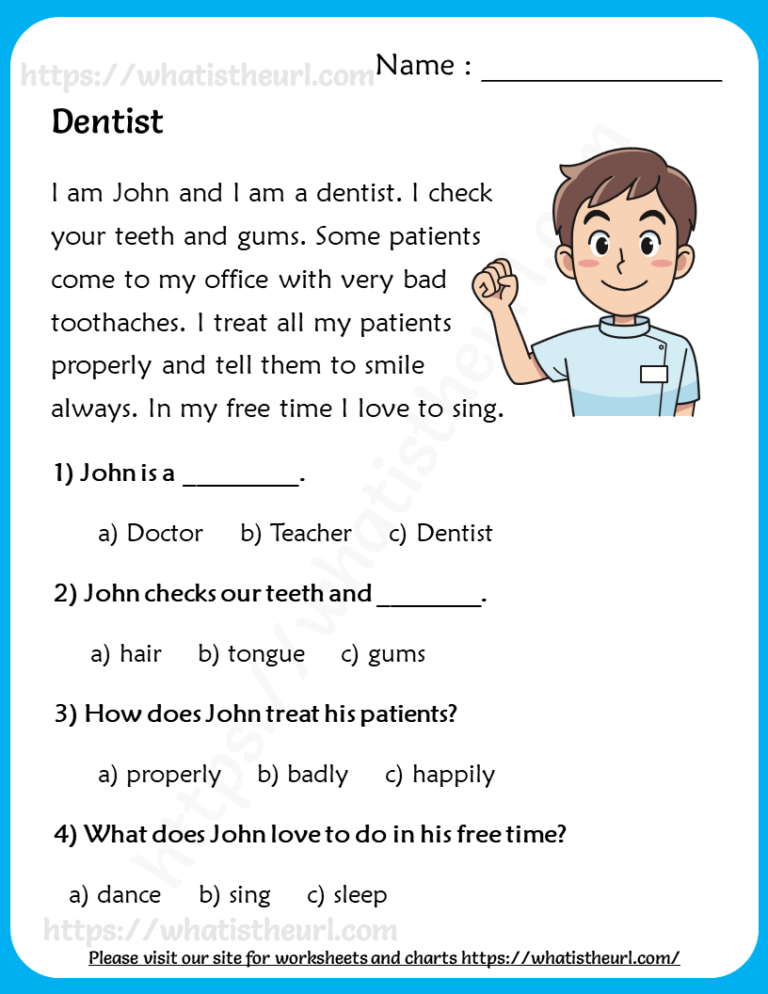
3. Document words in a word journal or dictionary
When kids are reading, they’re constantly coming across new words like nouns, verbs and adjectives.
Give your child a space to write down words and their definitions, or even draw pictures of what they represent. They can reference it when they’re stuck, or look back at all they’ve learned.
4. Have an art session
After kids are done reading, encourage them to draw or paint the story using their favorite art supplies.
This helps them understand what happened in the story. It also gives them a way to express what they think their favorite characters or settings looked like using clues from the story.
5. Use story maps and graphic organizers
Story maps are a great way for kids to sort through their thoughts about reading and the facts they just learned.
Help your first grader fill in bubbles or charts that help them identify characters, setting, plot, genre and other story elements.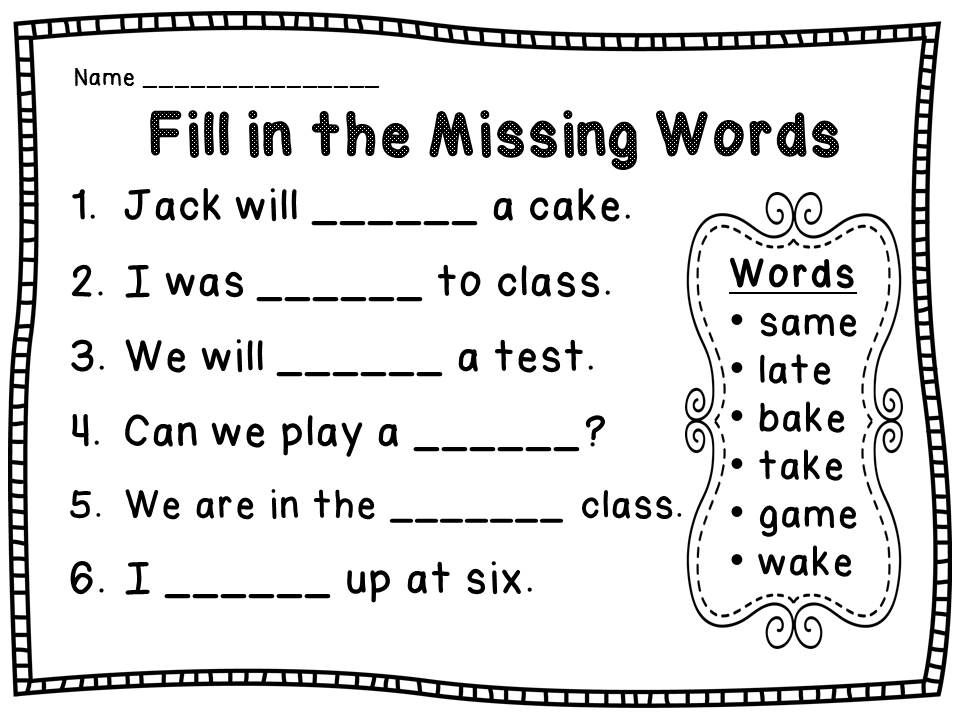 They can also use it to make predictions about what happens next, or record new facts and words they learned.
They can also use it to make predictions about what happens next, or record new facts and words they learned.
6. Listen to an audiobook
If kids aren’t excited about reading or want to tackle more complex texts before they’re ready, audiobooks are a great alternative. Encourage them to listen as part of their evening wind-down routine or during quiet time.
Audiobooks are also a great way to encourage a love of stories if children are struggling with word recognition. Practice is important, but sometimes it’s nice to give kids a positive break.
7. Encourage special interests
Space, ballerinas, race cars — no matter what your child is interested in, there’s a book for it. Ask a librarian at your local library to help you find books your child will love, or host a book swap with friends to expose your child to new genres.
Encourage a lifelong love of reading starting in 1st grade
When it comes to exploring the wonderful world of books, first grade readers are just getting started!
Set aside dedicated reading time every day, but don’t overwhelm your child.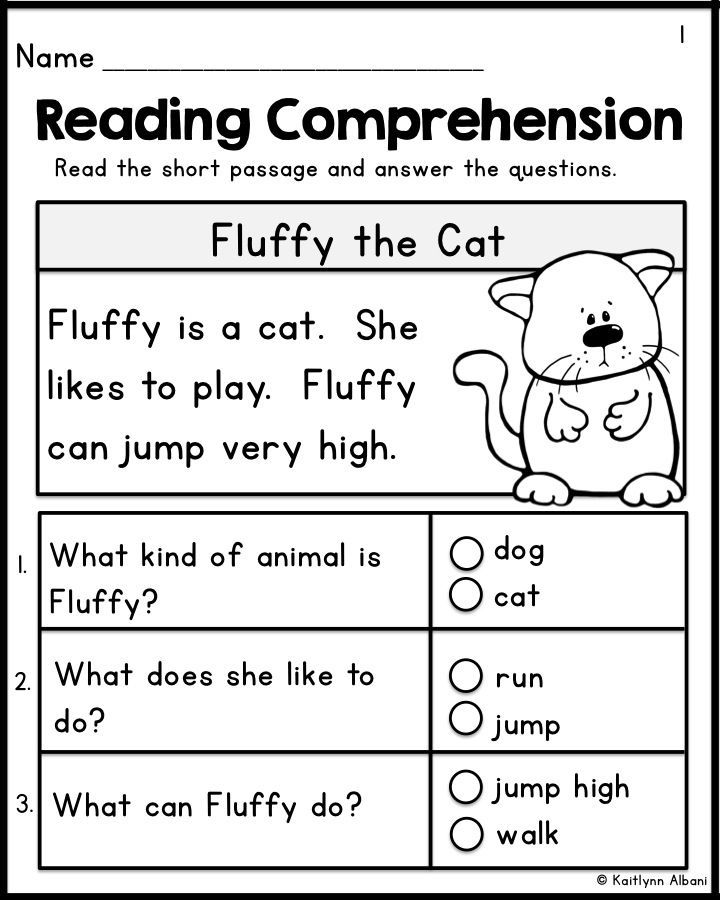 It’s important to let them discover what they want to read and build a love of reading on their own. Use reading as a quiet activity or cozy up with a blanket and a good book for an afternoon of family time!
It’s important to let them discover what they want to read and build a love of reading on their own. Use reading as a quiet activity or cozy up with a blanket and a good book for an afternoon of family time!
Prodigy English is the brand-new adventure from Prodigy Education that helps kids build a love of reading. As they answer reading and language questions, they’ll gain energy they can use to create a world of their very own!
Create a free account to get started today.
Sign up now1st Grade Reading Activities For Struggling Readers
First grade is often where your child’s reading foundation is developed thoroughly. This is an essential grade for your child to establish their reading level and progress. However, sometimes children might struggle as they try to advance their reading skills. If you find that your child is struggling with reading, you can help them by trying these 1st grade reading activities for struggling readers.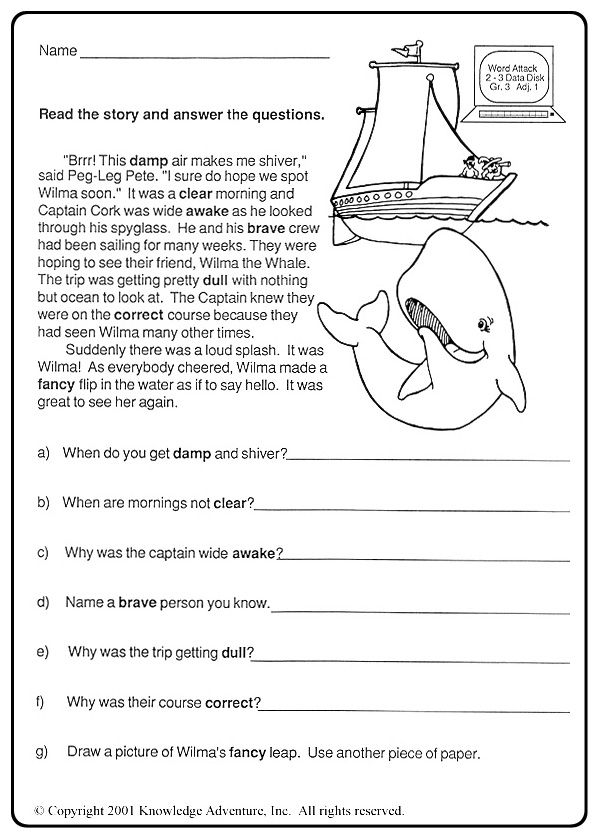
What reading skills should my 1st grader have?
Your first grader is definitely a full-fledged reader now! They already have many reading skills that they are continuing to improve and also acquiring new reading skills.
By the end of first grade, your child will have learned 150 sight words. They also should be familiar with many one syllable words and high-frequency words.
In first grade, they should be able to understand the basic structure and features of a sentence.
By now, they are also able to talk about what they have been reading and be able to answer content questions. Your child should also be able to understand the differences between fiction and non-fiction books and texts.
If you find that your child is struggling with any of these reading skills, they might need some more practice or intervention to help them get to their appropriate reading level.
How often should my 1st grader be reading?
When it comes to practicing their reading skills, first graders on average should be reading at least 10 minutes every day.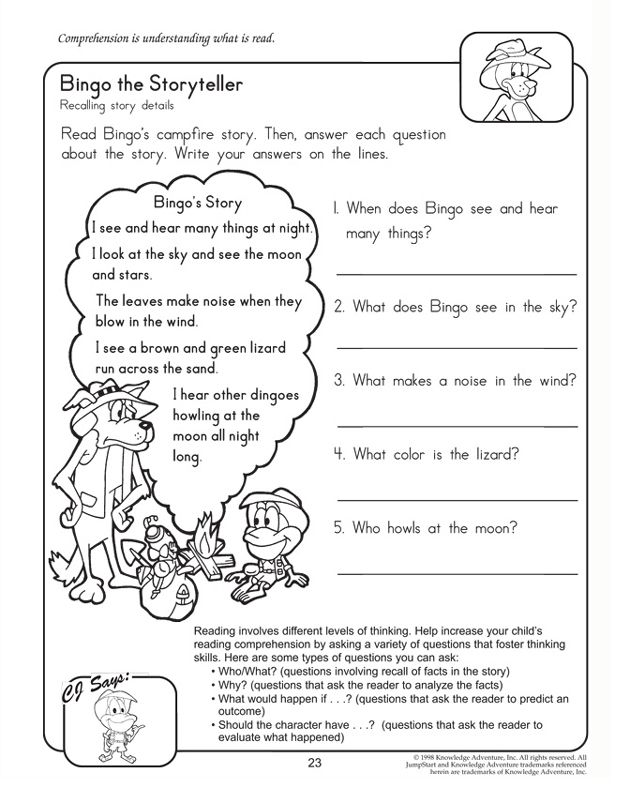
This might not seem like a lot of time but even just 10 minutes of reading time can help make a massive improvement in their reading skills. Make the 10 minutes a daily habit for your child like brushing their teeth.
Also, while 10 minutes is a good average number for all readers, struggling readers might be overwhelmed with anything more than that.
Some children might be hesitant or resist reading every day at first, but there are ways to make reading fun and an activity they look forward to doing.
How do you make reading fun for struggling readers?
Reading can be difficult for some first graders. It is important to be patient but also encouraging with your struggling reader. Here are some activities to make reading fun for them to get them to read every day:
- Read as a family – Reading as a family not only creates strong bonds, but it also helps to give your child a model for good reading habits. When they see you prioritize reading, they are more likely to value it and prioritize it as well.
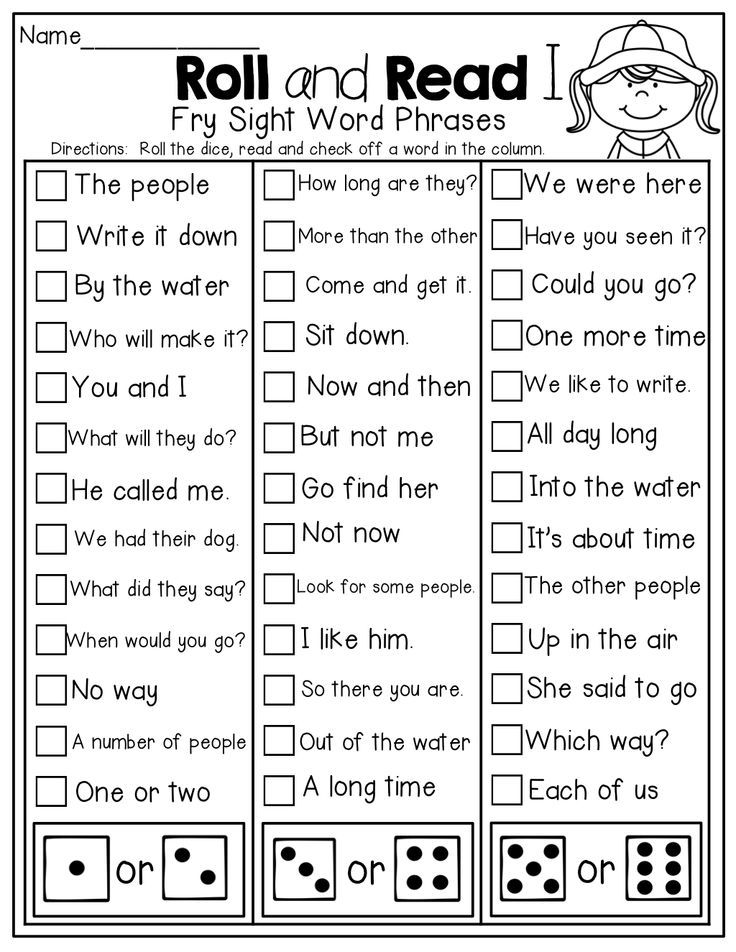
You can schedule 10 minutes for everyone to read their own books together or you can choose a book as a family to read aloud.
- Read on TV – Using television as a reading tool might seem counterintuitive, but it is a great way to get your child to read without even knowing it!
When your child is watching television turn on the subtitles so that they can watch and read at the same time. This is a strategy commonly used with students learning a second language to practice both reading and listening skills.
- Visit a library – Get your child excited to read by going on a couple “reading field trips” such as going to a library. You can tour your local library and have your child pick out a few books to take home.
- Visit a museum – Another great “reading field trip” option is to visit a museum. Museums often have a ton of great reading practice opportunities, and you can also prep your child before the visit by reading an article or story about the museum.
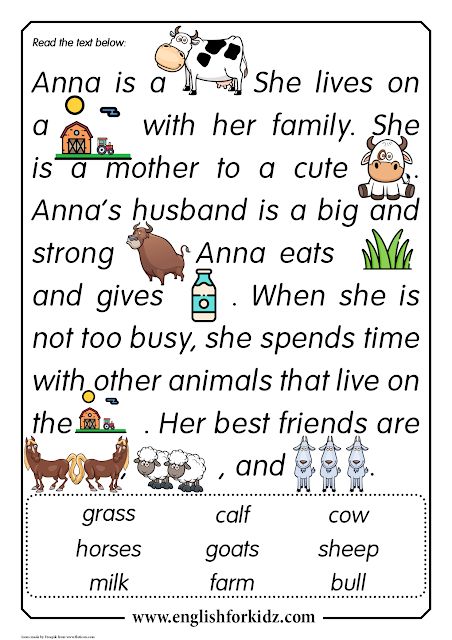
- Talk to an author – What better way to get your child about reading a book than by talking to the person that wrote it?
While you might not be able to talk to J.K. Rowling, many children’s books authors have meet ups at local bookstores or you can ask to talk to them virtually through Zoom.
Websites like Cameo also have some authors offering to record personalized videos, so you can have an author create a video just for your child!
- Create reading goals – Reading goals can help your child see the progress they are making and helps to keep them motivated. You can help them visualize and meet these goals by creating a reading goal chart or tracker and display it somewhere they will always see it.
- Use a reading app – Technology is your greatest tool to help with your struggling readers. Try using reading apps such as Readability which acts like a private reading tutor for your child. They can get reading help whenever and wherever they need it!
- Get them to write – Reading and writing are closely related language skills.
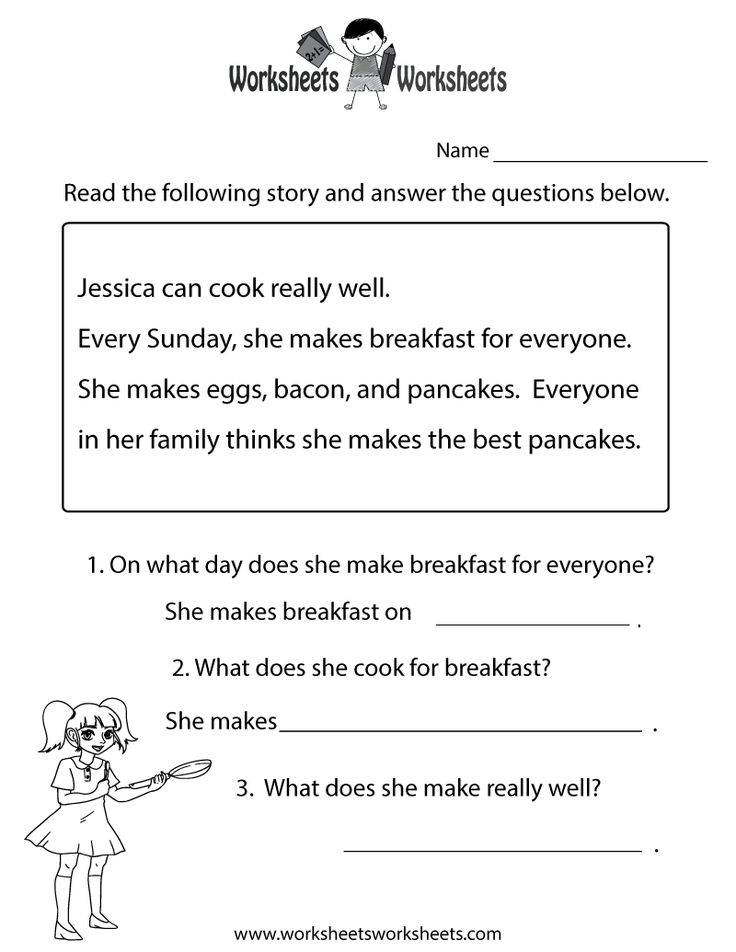 Often, good readers make good writers, and good writers make good readers.
Often, good readers make good writers, and good writers make good readers.
You can encourage your child to practice their writing and reading skills by making comic books or short stories together then read them as their daily reading material.
First grade is a critical time for young readers to improve their reading skills and build new ones. Using activities and tools such as Readability can make reading fun and interactive for struggling or reluctant readers. Encouraging your child to read every day can help them to become a better reader and actually learn to enjoy reading.
standards for grades and quarters
Reading is a key skill that opens the gate to the land of knowledge for a child. Thanks to this skill, children learn about the phenomena and events of the world around them, get acquainted with the characters and actions of people, meet new problems and ideas. This skill helps them to broaden their horizons and ideas about the world, develops critical thinking and trains cognitive abilities - attention, imagination, memory.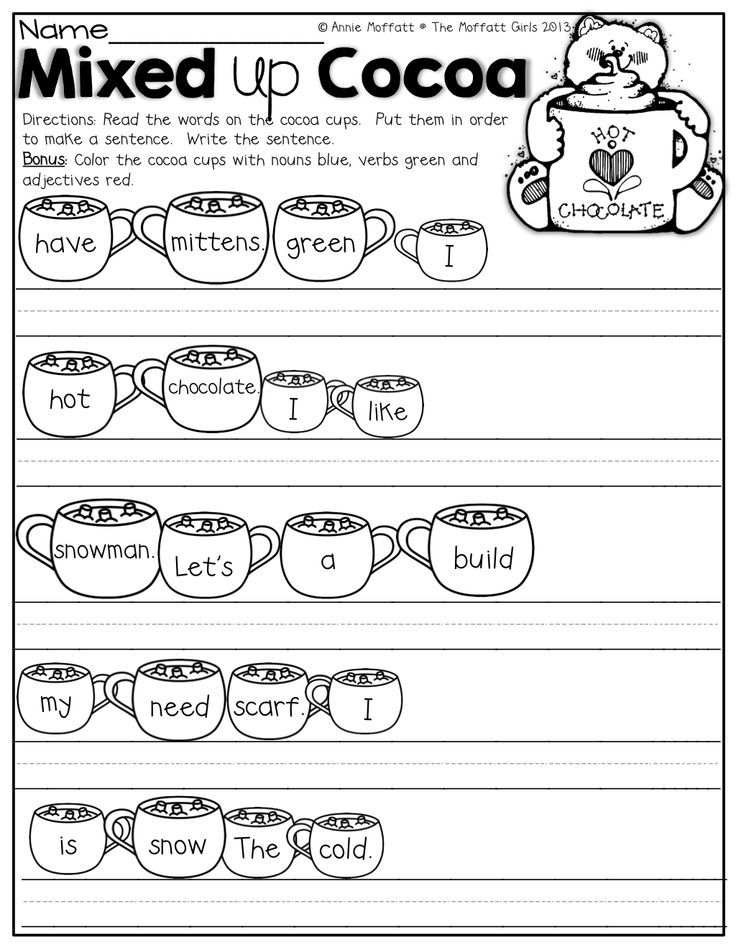 Reading is the foundation for further successful learning. nine0003
Reading is the foundation for further successful learning. nine0003
To understand how well a child develops this skill, it helps to check the reading technique. Reading technique is a multifactorial test that characterizes the development of a skill from different angles. In the technique of reading are evaluated:
- reading speed,
- reading method,
- reading awareness,
- correct reading,
- expressiveness of reading.
A difficult reading skill consists of both a technical and a semantic component and is aimed at achieving the main goal - understanding and assimilation of the information read. nine0003
Reading technique parameters
Let's consider all the components of reading technique in more detail.
- Reading speed - the number of words read in a certain period of time. Often, parents focus on the formation of fluent reading, while the child makes many mistakes, does not understand and does not remember what he read.
 It is not necessary to force only speed, slower conscious reading and a gradual increase in tempo are better than fast mechanical reading with errors and inaccuracies. nine0008
It is not necessary to force only speed, slower conscious reading and a gradual increase in tempo are better than fast mechanical reading with errors and inaccuracies. nine0008 - Way of reading — syllabic reading or reading the whole word, smoothly. With the development of the skill, the child has a gradual transition from syllabic reading to smooth reading in whole words.
- The correct reading of is characterized by the absence of errors and hesitation. Inattention, problems of diction lead to inaccurate reading, indistinct articulation and, as a result, to a distortion of meaning. Pay attention to the correct reading - this will be the key to competent writing. nine0008
- Reading awareness involves reading comprehension, awareness of the idea and meaning of the text, and in the future - this is the ability to catch the subtext, humor, irony, the attitude of the author. Interfering with reading comprehension can be low reading speed, distorted reproduction - guessing words, changing the shape of words, not reading endings.
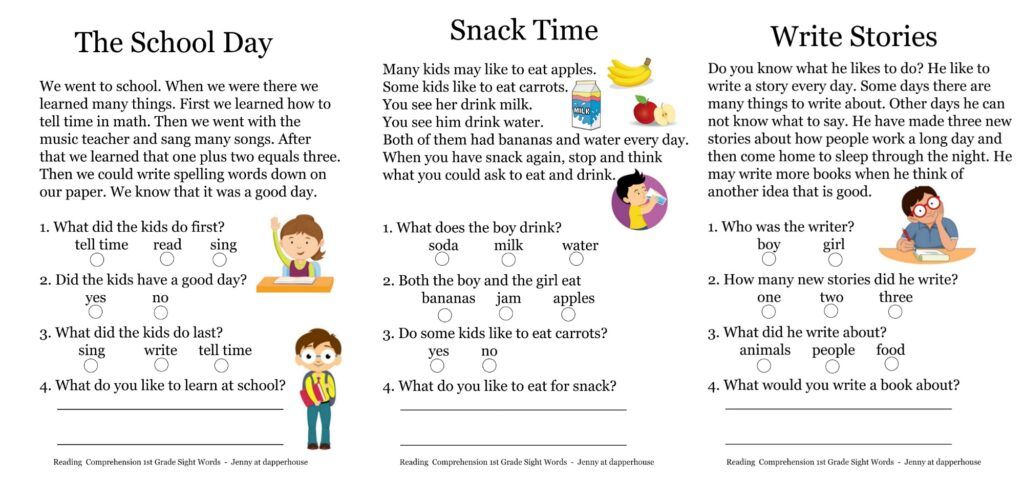
- Reading expressiveness - the use of pauses, finding the right intonation, the correct placement of stresses. The expressiveness of reading is inextricably linked with awareness. When understanding what is read, it is easier for the child to observe the necessary pauses, select the correct intonation and place logical stresses. nine0008
Reading speed standards for elementary school
GEF standards determine the desired reading speed for a child by a certain point in learning, help to understand whether the development of a skill is successful or whether additional attention is required. Standards - indicative values; it is important to take into account the individual psychophysiological characteristics of each child and evaluate the growth of his personal indicators.
Grade 1 reading speed standards
Reading speed standards in grade 2
Reading speed standards in grade 3
Reading velocity
Reading speed, to which it is necessary schools, is reading at the speed of conversational speech, 110-120 words per minute.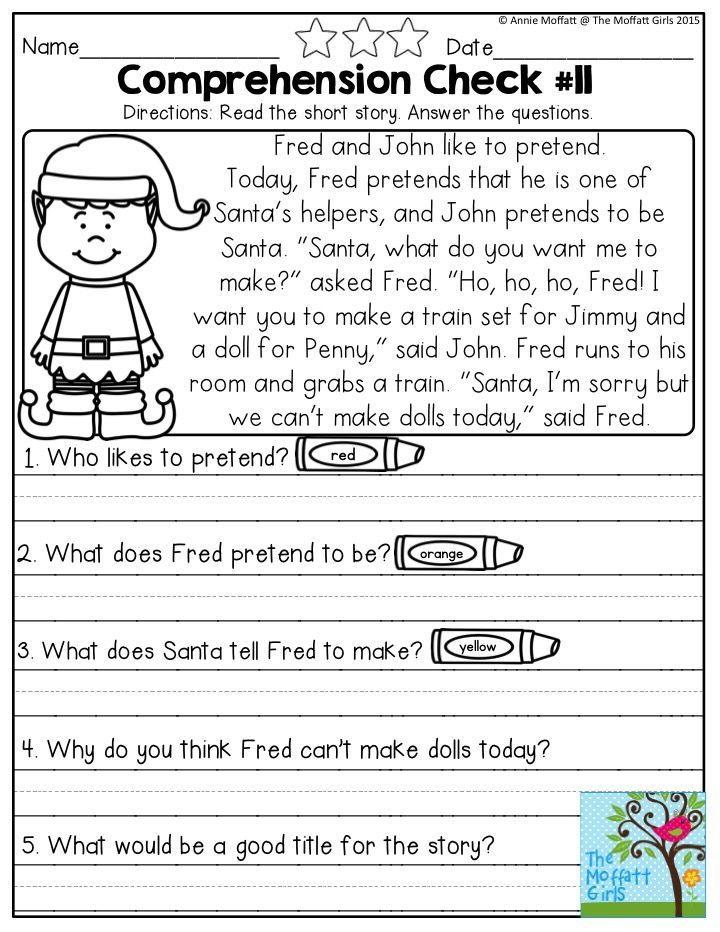 The human articulatory apparatus has adapted to this speed over time. And most importantly, the reading should be conscious, correct, expressive. nine0003
The human articulatory apparatus has adapted to this speed over time. And most importantly, the reading should be conscious, correct, expressive. nine0003
Other parameters of reading technique
Grade 1
At the end of the first half of the year. Reading is smooth syllabic, conscious and correct, with a clear pronunciation of syllables and words.
At the end of the second half of the year. Reading is conscious, correct, simple words are read as a word. Words with a complex syllabic structure can be read syllable by syllable.
Grade 2
At the end of the first half of the year. Reading consciously, correctly, in whole words. Compliance with logical stresses. Compound words can be read syllable by syllable. nine0003
At the end of the second half of the year. Reading meaningful, correct, in whole words. With observance of logical stresses, pauses and intonations. Syllabic reading is undesirable.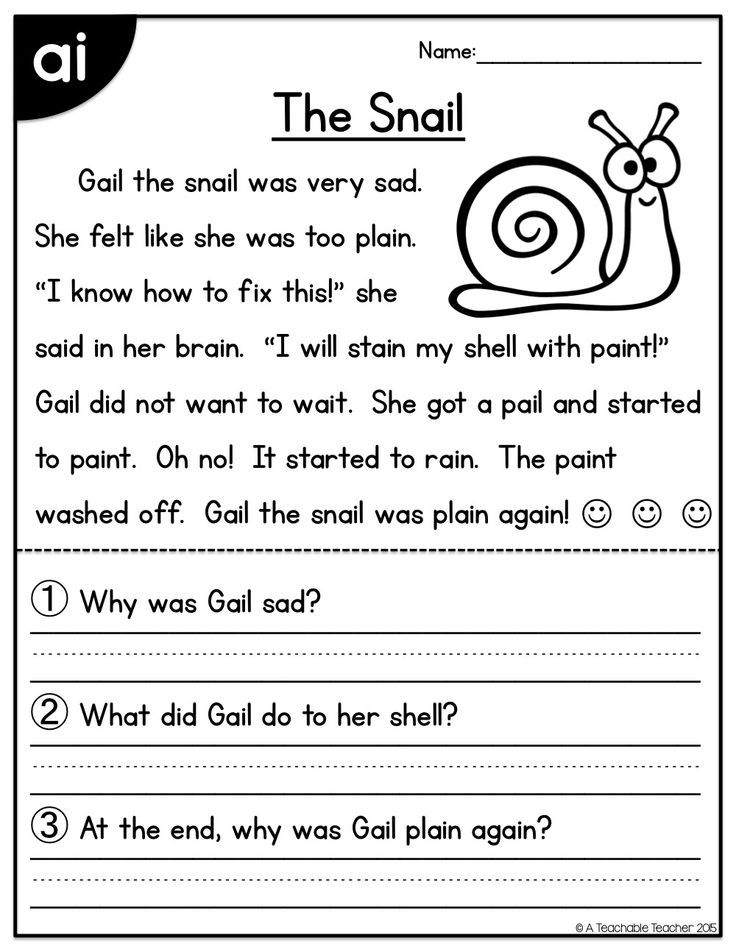
Grade 3
At the end of the first half of the year. Reading consciously, correctly, in whole words. With observance of pauses and intonations, with the help of which the child expresses an understanding of the meaning of what is being read.
At the end of the second half of the year. Reading consciously, correctly, in whole words. With observance of pauses and intonations, through which the child expresses understanding of the meaning of what is being read. nine0003
4th grade
At the end of the first half of the year. Reading consciously, correctly, in whole words. With the help of observed pauses and intonations, the child not only expresses an understanding of the meaning of what is being read, but is able to express his attitude to what he has read.
At the end of the second half of the year. Reading consciously, correctly, in whole words. With observance of pauses and intonations, through which the child expresses an understanding of the meaning of what is read, and his attitude to the content of what is read.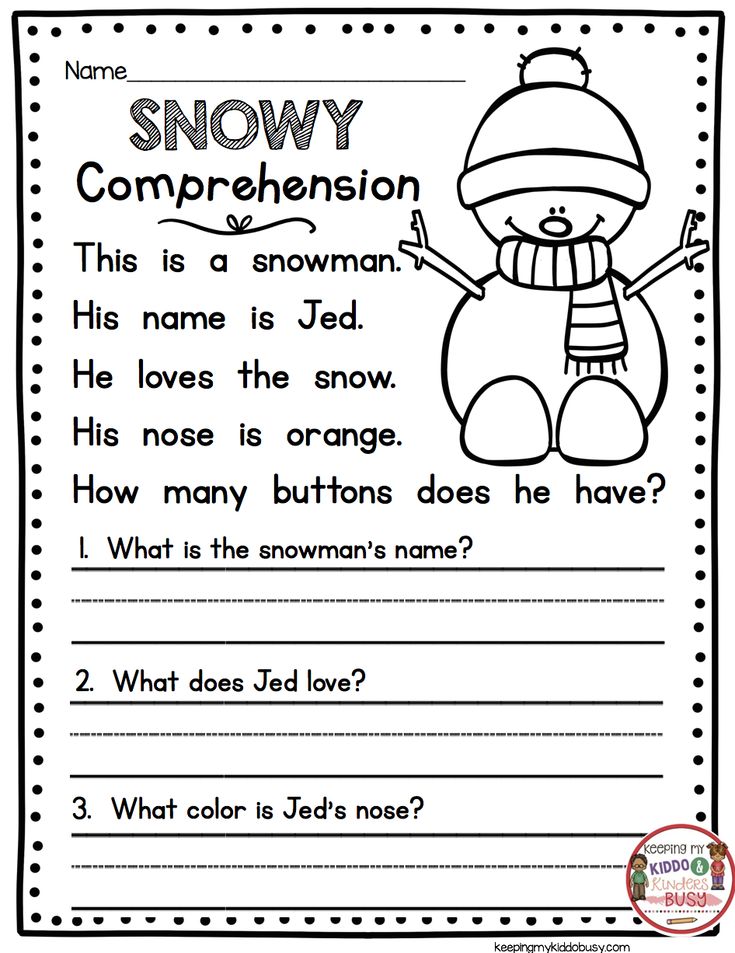 nine0003
nine0003
How can I test my child's reading skills on my own?
Have your child see how well they read already. Children usually love to know how many centimeters they have grown, and they may also be interested in knowing their progress in reading. Warn about the upcoming test and ask the child to read quickly.
The control of reading technique in sensitive children who, due to their temperament, can hardly tolerate various tests, can be carried out imperceptibly or in the form of a game. Do not create unnecessary excitement around the upcoming test, do not arrange a test in the form of an exam. If the child is worried, stutters, transfer control to another time. nine0003
Verification process:
- Prepare a clock with a second hand or use the stopwatch on your phone, and choose the appropriate text.
- Ask the child to take a seat.
- Show him the text and ask him to read it aloud.
- Track the time from the moment your child starts reading.
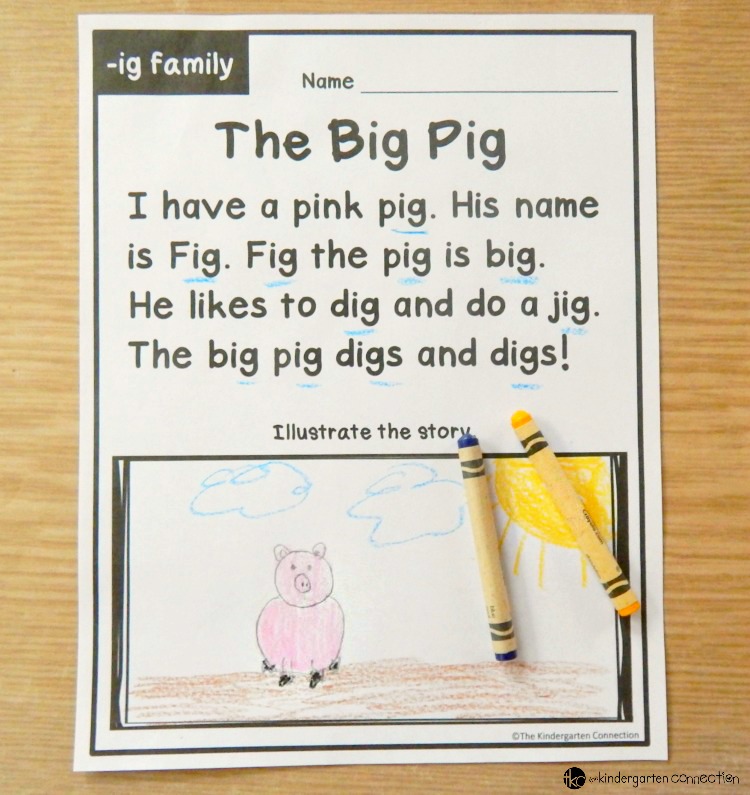 Not all children are able to immediately start reading on command, which leads to inaccurate results.
Not all children are able to immediately start reading on command, which leads to inaccurate results. - Usually, one minute is noted for checking, but some experts recommend taking 2 minutes for monitoring, since not all children are equally quickly included in the work. Divide the result obtained in 2 minutes in half. nine0008
- Do not correct or interrupt while reading. It is better to discuss the mistakes made after the child has finished reading.
- Assess the speed, correctness, awareness and expressiveness of reading.
- Retest and compare results. Reading technique may differ depending on the child's fatigue, health status and mood.
Which text is suitable for verification?
Both fiction and non-fiction texts appropriate for the child's age are suitable for this purpose. The text should be unfamiliar, but understandable to the child, have educational and educational value. The texts of V. Bianchi, L. Tolstoy, N. Nosov, B.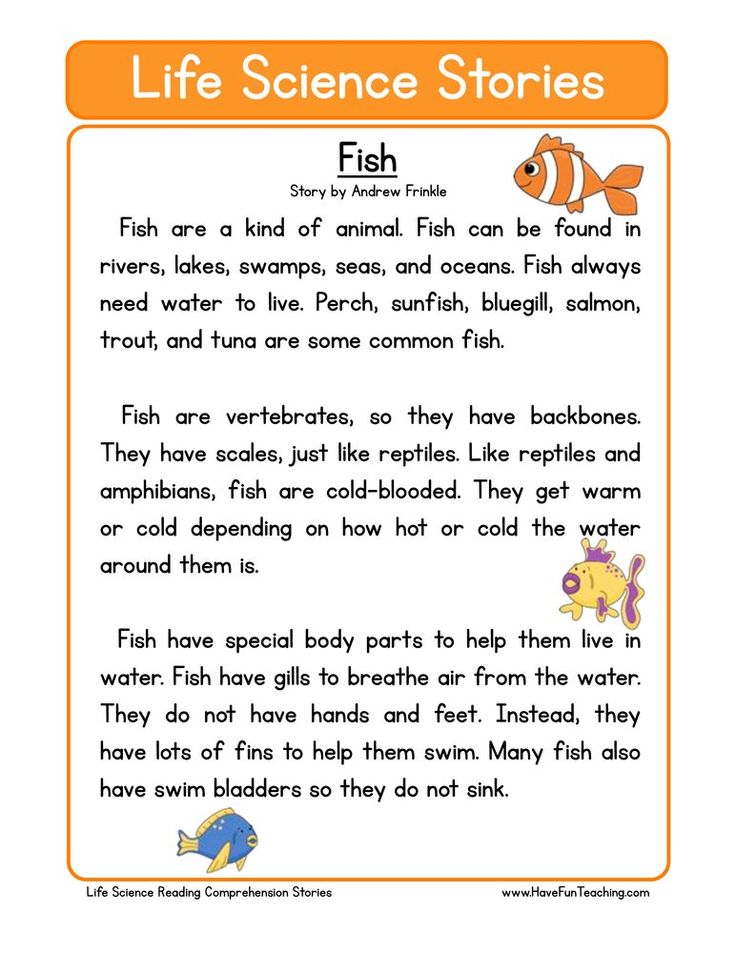 Zhitkov, K. Ushinsky, V. Dragunsky are suitable. The text for verification can be found in special manuals or in a textbook on the Russian language and literature. nine0003
Zhitkov, K. Ushinsky, V. Dragunsky are suitable. The text for verification can be found in special manuals or in a textbook on the Russian language and literature. nine0003
You should find the text that is located on the spread of the book so that the child does not have to waste time turning pages. Choose text without an abundance of punctuation marks and distracting illustrations. It is not desirable that the passage contains common complex sentences and dialogues. The font must be large enough and legible. The text should not have a technical focus and contain terms incomprehensible to the child.
Test score
Speed score
Count how many words the child read in one minute. When counting words, pay attention:
- prepositions, conjunctions, particles of 1-2 letters are counted as one word;
- when wrapping, the word is counted as 2 words;
- if the word is written with a hyphen, look at how many letters are on both sides of the hyphen: if there are more than three, we count it as 2 words, for example, "long, long", if less than three, for example, "somehow", - as one .

Compare your score with the recommended range and your child's previous performance. nine0003
Comprehension score
Determine how well the child understood what they read. If the student reads slowly and has read only a couple of sentences, let him read the passage to the end. Ask your child a few questions about the text. Ask what or who he read about. Ask the child to identify the main idea of what they read and retell the text.
For a deeper check of the meaning of the reading and learning, use special teaching kits. nine0003
Correctness assessment
Pay attention to whether the child reads what is written correctly, whether he pronounces words clearly, whether there are hesitations and corrections, whether he alters words, whether he changes endings, whether he places stresses correctly. Discuss the mistakes with the student.
Evaluation of expressiveness
To assess the expressiveness of reading, the child is offered a familiar text.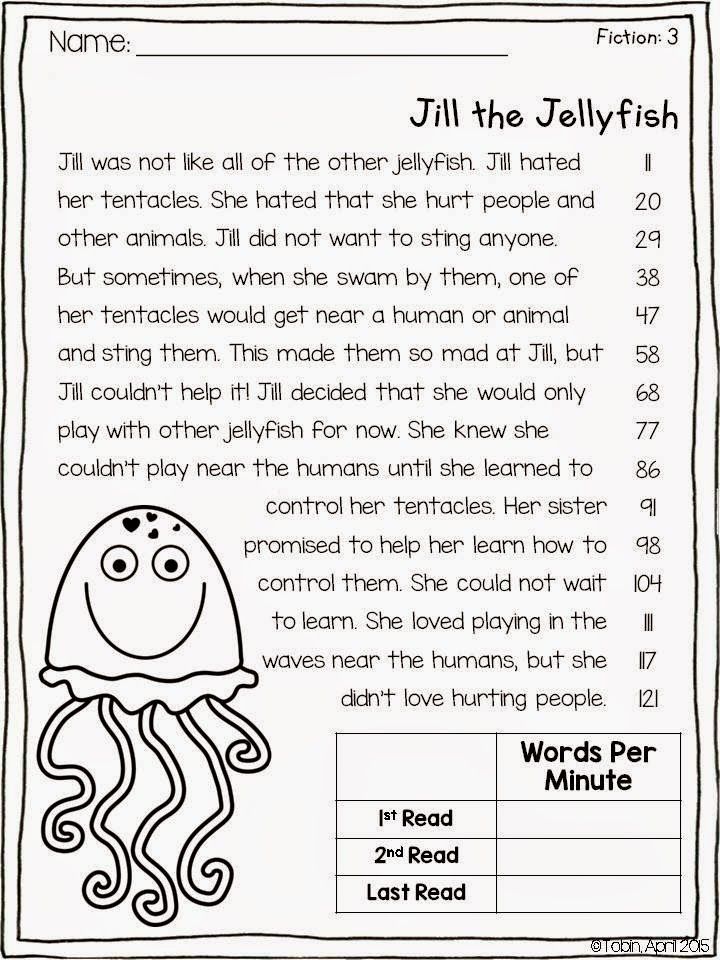 Listen to whether the child observes pauses and other punctuation marks, whether he changes intonation, whether he highlights the main idea. nine0003
Listen to whether the child observes pauses and other punctuation marks, whether he changes intonation, whether he highlights the main idea. nine0003
Improving reading technique
Poor results in reading technique are not a reason to be upset, but only a signal that additional efforts need to be made to improve the skill. You can work with the child on your own or contact a specialist who will analyze the weak points and select the appropriate exercises. Conduct additional activities with the child in the mode of "sparing reading" without pressure. It is more important to observe the regularity and frequency of classes: 10-20 minutes daily. nine0003
How can you motivate your child to read:
- Reward your efforts with stickers, stars.
- Mark progress visually - create a success board so your child can visually see their progress
- Conduct activities in the form of a game, such as "going to the library" or "reading to your favorite toys.
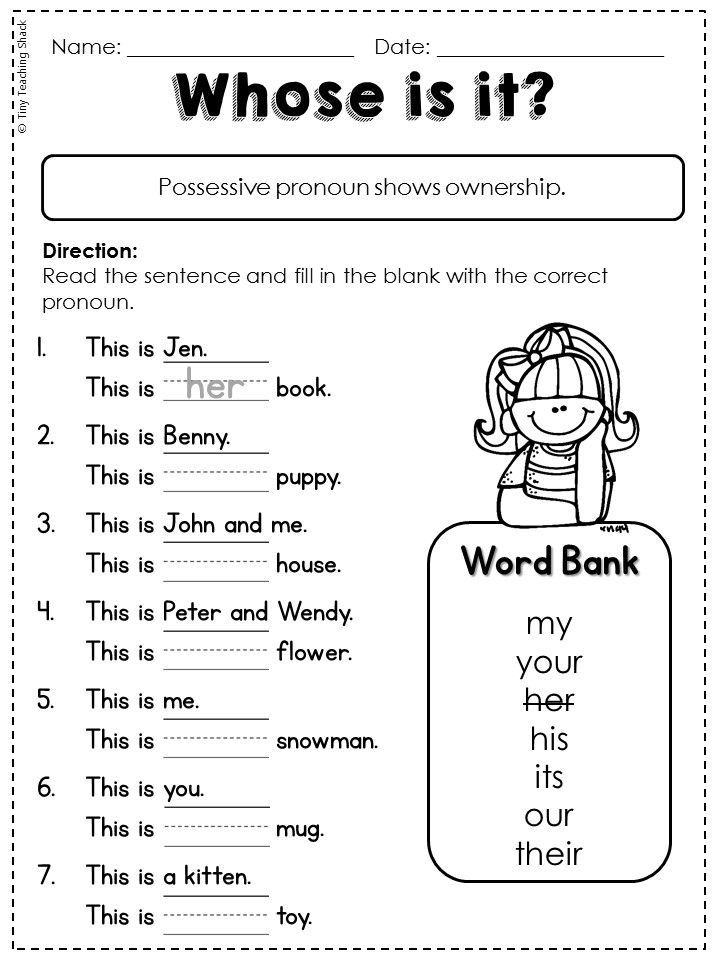 "
" - Choose books and texts that are interesting for your child.
- Let the child read to pets, they are grateful and accepting listeners. Reading to them, the child is not afraid to make a mistake, he relaxes and overcomes the fear of failure. nine0008
- Have a reading competition between peers and siblings.
To improve the speed of reading will help:
- Reading by syllabic tables.
- Multiple reading. Read the same text several times, increasing the pace. From the second time the child will be able to read faster.
- "Tug". An adult leads a finger along the line, setting the pace. The child tries to read at a given pace.
- Tops and roots. The child reads the words, covering the upper or lower half of the letters with a ruler. nine0008
- Reading in a book turned upside down.
- Lightning. Alternating reading at a comfortable pace with reading at the highest possible speed for 20 seconds on the command "Lightning!".
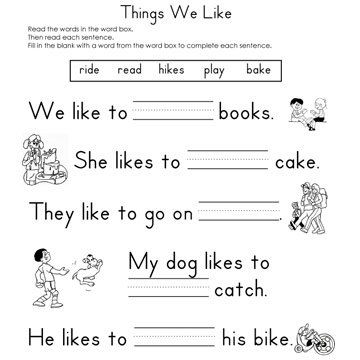
- "Sprint". Reading speed competition between classmates.
- Work on expanding the field of view according to Schulte tables.
- Reading with a window to eliminate "regression" - recurrent eye movements that lead to repeated reading.
For correct reading:
- Work on clear diction, do articulation exercises.
- Read tongue twisters and tongue twisters.
- Invite the child to correct the deformed sentences: "The weather is good on the street."
- "Imaginary word". When reading, the wrong word is pronounced, the child must correct it.
Reading comprehension
- Wave Reading. First, the child reads aloud, then retells what he read. nine0007 Drawing up a plan for reading.
- The student reads to himself at a comfortable pace, tells what he understood and felt, what he thought about
- Discuss unfamiliar words and expressions.
- Invite the child to draw a picture of the passage they read.

- Ask them to tell you what they liked about the text, what they remember.
For expressive reading
- Role-playing, staging.
- Put on a "radio show". nine0008
- Expressive recitation of poems.
- Voice flexibility training. The ability to speak quieter-louder, higher-lower.
- Conducting reading indicating the tone or strength of the voice.
- Live Picture. One reads, the other reacts with facial expressions.
Improving reading skills in elementary school is very important. It is fluent and meaningful reading that activates the processes of thinking, attention, memory and is the basis for a child's successful education in the future. This detailed instruction on reading technique control will help you track and improve your child's skill development. nine3 times a year: at the beginning of the academic year, at the end of the first half of the year and at the end of the academic year. But sometimes the teacher prefers to check the reading technique at the end of each quarter.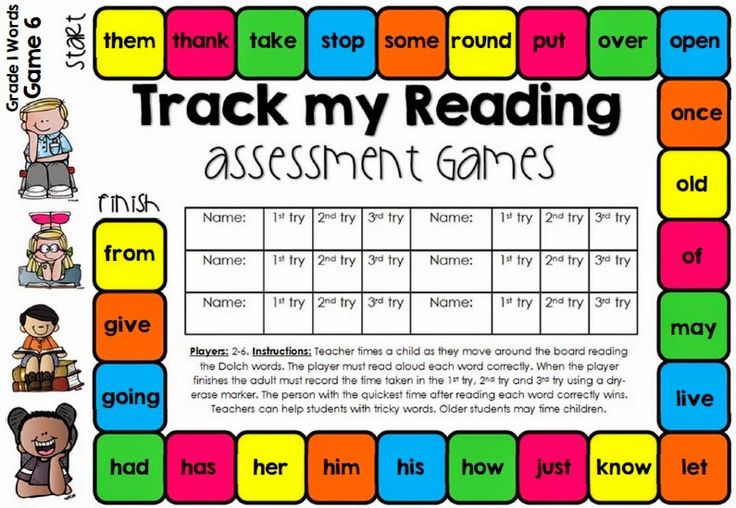 nine0003
nine0003
The reading technique test includes not only reading speed, but also reading accuracy, comprehension and expressiveness. I wrote about this in more detail in article "How to test a child's reading technique."
- Special texts are selected to test the reading technique.
- The text should be understandable to the child, but be unfamiliar to him.
- Sentences should be short, without any complicating constructions or signs. nine0008
- It is better if the text for checking reading is without illustrations and dialogues so that children are not distracted while reading.
- Text must be placed on one page.
- While reading the text, you can not interrupt the child, correct mistakes. After completing the reading, you need to return to those words that caused difficulty or were read incorrectly and ask the child to read them again. In the process of reading, a first grader can follow the text with his finger so as not to lose the line.
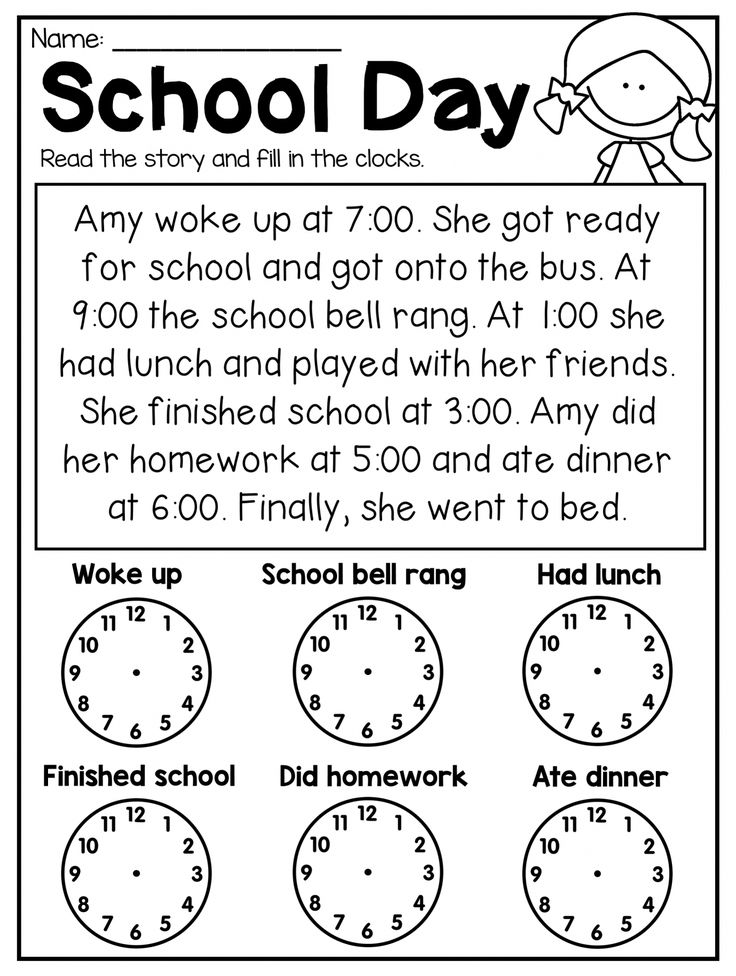 nine0008
nine0008 - To test reading comprehension, you need to ask a few questions about the text.
Reading technique norm in grade 1
1st half year
Reading should be smooth syllabic, conscious and correct, with clear pronunciation of syllables and words.
Reading speed - 25-30 words per minute.
2nd half year
The child reads whole words correctly, consciously. Words with a complex syllabic structure are read syllable by syllable. nine0317 Reading speed - 30-40 words per minute.
These texts can be used not only to check the child's reading skills, but also for retelling. How to teach a child to retell can be found in the article “Teaching a child to retell”.
Texts to test reading technique in grade 1
Sparrow and swallows
Swallow made a nest. The sparrow saw the nest and occupied it. The swallow called her friends for help.
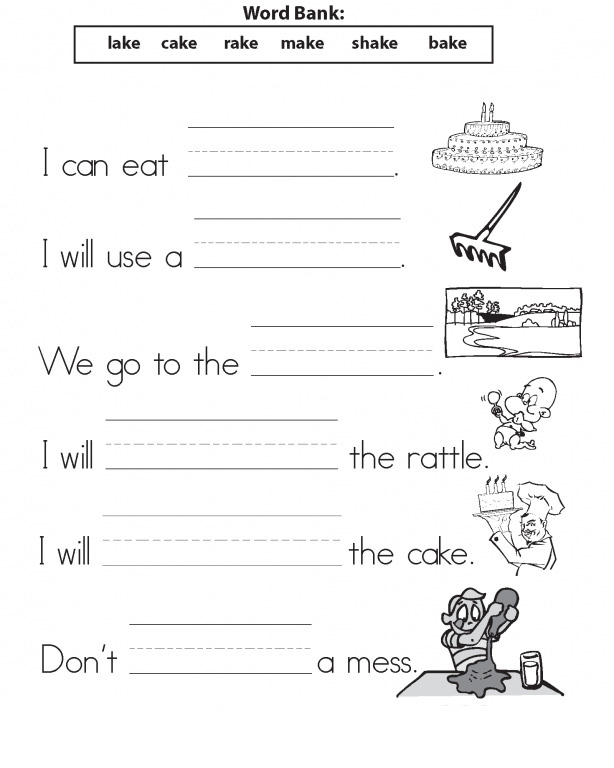 Together, the swallows drove the sparrow out of the nest. (22 words)
Together, the swallows drove the sparrow out of the nest. (22 words) Questions:
- What did the sparrow do?
- Who did the swallow call for help?
Ant
Ant found a big grain. He couldn't carry it alone. The ant called for help from his comrades. Together, the ants easily dragged the grain into the anthill. (22 words)
Questions:
- What did the ant find?
- Why did the ant call his friends for help?
Summer
A warm summer has come. Currants ripened in the garden. Masha and Tanya collect it in a bucket. Mom will make jam from it. In winter, in the cold, children will drink tea with jam. (29 words)
Questions:
- What berry is ripe in the garden?
- What will mother do?
The fox and cancer
The fox suggested that the crayfish run a race.
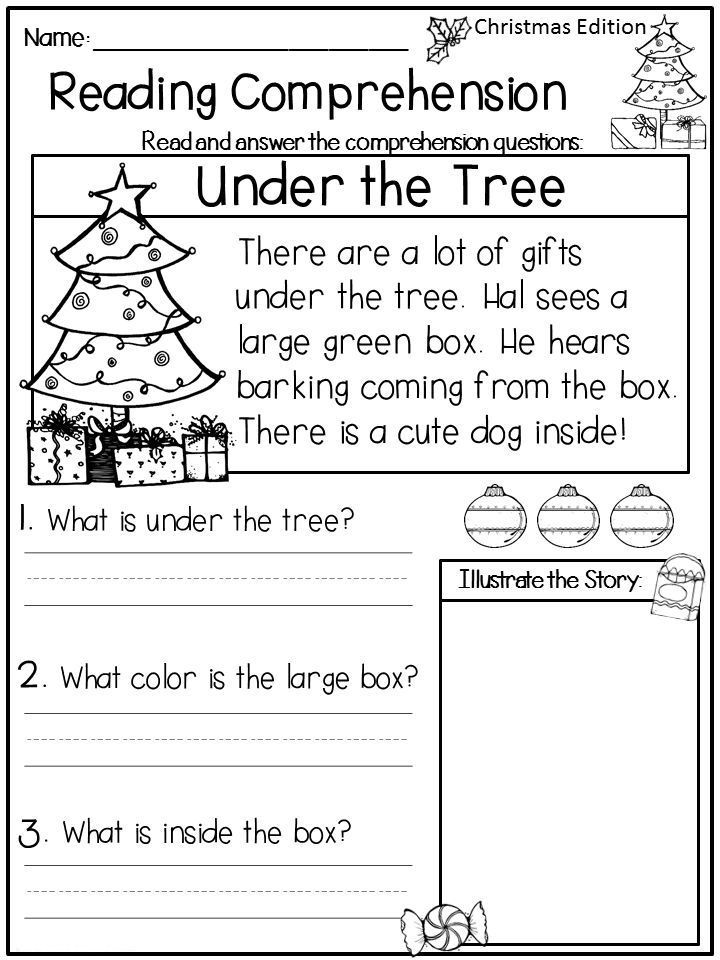 Cancer agreed. The fox ran, and the crayfish clung to the fox's tail. The fox ran to the place. The fox turned around, and the crayfish unhooked and said: "I've been waiting for you here for a long time." (32 words)
Cancer agreed. The fox ran, and the crayfish clung to the fox's tail. The fox ran to the place. The fox turned around, and the crayfish unhooked and said: "I've been waiting for you here for a long time." (32 words) Questions:
- What did the fox offer to cancer?
- How did cancer outsmart the fox?
Cranes
Cranes live near swamps, forest lakes, meadows, river banks. Nests are built right on the ground. The crane circles over the nest, guarding it. At the end of summer, cranes gather in flocks and fly to warm countries. (33 words)
Questions:
- Where do cranes build nests?
- When do cranes fly to warm countries? nine0008
Chicken
A little girl wrapped woolen threads around an egg. It turned out to be a ball. This ball she put on the stove in a basket. Three weeks have passed. Suddenly there was a squeak from the basket.
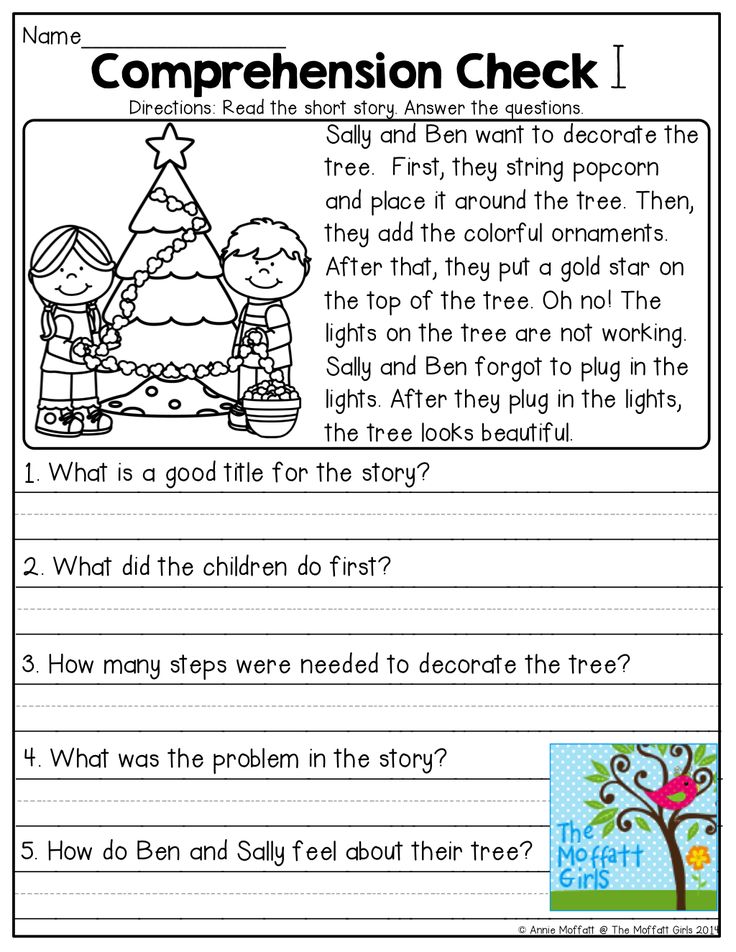 The ball squeaked. The girl unrolled the ball. There was a little chicken there. (34 words)
The ball squeaked. The girl unrolled the ball. There was a little chicken there. (34 words) Questions:
- How did the girl make the ball?
- What happened to the ball after three weeks?
Mushrooms
The guys went to the forest for mushrooms. Dima found a beautiful boletus under a birch. Tanya saw a small butter dish under a pine tree. Ilya saw a huge boletus in the grass. In the grove they collected full baskets of various mushrooms. The children returned home happy and happy. (38 words)
Questions:
- Who found the boletus?
- What mushroom grew under a pine tree?
- Where did the boletus hide?
Summer
Summer has come. In forest clearings, the grass is above the knees. Grasshoppers chirp. Strawberries turn red on the tubercles. Raspberries, lingonberries, wild roses, blueberries bloom. The chicks fly out of the nests.
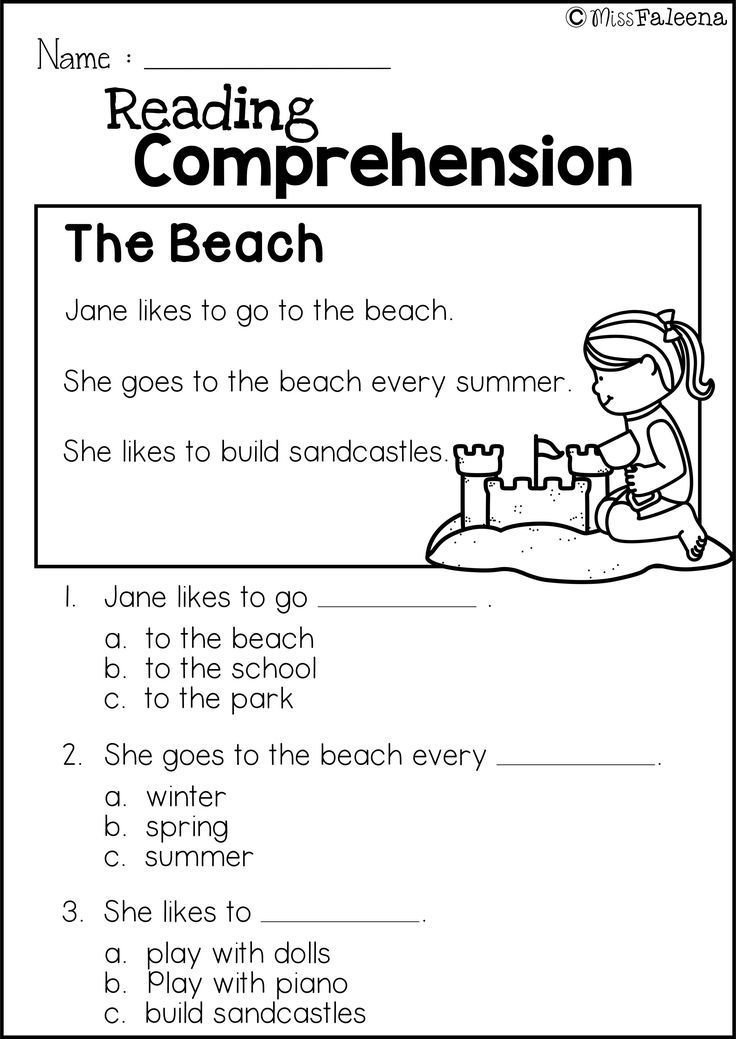 A little time will pass, and delicious wild berries will appear. Soon children will come here with baskets to pick berries. (39words)
A little time will pass, and delicious wild berries will appear. Soon children will come here with baskets to pick berries. (39words) Questions:
- What is the grass in the meadows?
- Which berries bloom?
Hedgehog
The guys were walking through the forest. We found a hedgehog under a bush. He curled up in fear. The guys rolled the hedgehog into a hat and brought it home. They gave him milk. The hedgehog turned around and began to eat milk. And then the hedgehog ran back to his forest. (39 words) (according to E. Charushin)
Questions:
- Who did the guys find?
- What did the hedgehog do with fear? nine0008
- What did the guys give the hedgehog?
Bathing the cubs
A big bear and two merry cubs came out of the forest. The bear grabbed one cub with her teeth by the collar and let's dip into the river. The other cub got scared and ran into the forest.
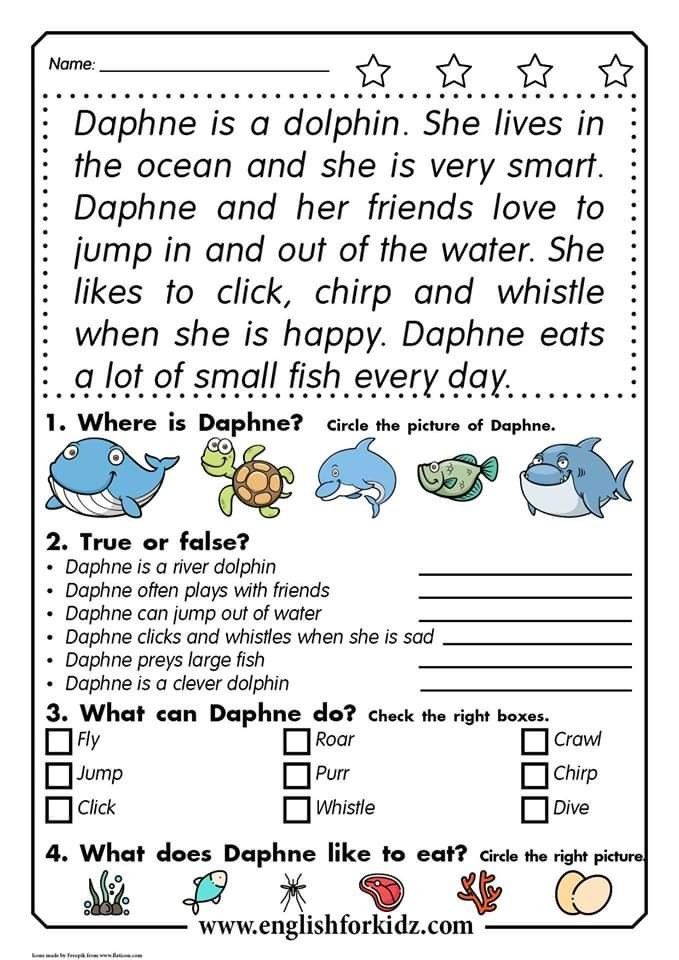 His mother caught up with him, slapped him, and then into the water. The cubs were happy. (40 words) (according to V. Bianchi)
His mother caught up with him, slapped him, and then into the water. The cubs were happy. (40 words) (according to V. Bianchi) Questions:
- Who came out of the forest?
- What did the second bear do? nine0008
- Were the cubs satisfied with the bath?
Lynx
In a dark forest, near a forest path, a beast lay down. This is a lynx - a cat the size of a large dog. Her tail is short, her ears are tufted, her skin is spotted. The lynx lies on a thick bough and waits. She will rush from the tree to her prey. (40 words)
Questions:
- What is the tail of a lynx?
- Where did the lynx hide?
Spring
The sun warmed the earth. Ran the streams. The rooks have arrived. Birds hatch chicks. A hare jumps merrily through the forest. The fox went hunting and smells the prey. The she-wolf led the cubs into the clearing.
 The bear growls at the lair. Butterflies and bees fly over the flowers. Everyone is excited about spring. (41 words)
The bear growls at the lair. Butterflies and bees fly over the flowers. Everyone is excited about spring. (41 words) Questions:
- What is the hare doing?
- Where did the she-wolf lead the cubs?
- Where do butterflies and bees fly?
Woodpecker
What does the woodpecker do in the forest? He lives and works in the forest. A bird with a red cap on its head sits on a tall pine and knocks on the trunk with a strong beak. Why is he doing this? Woodpecker saves trees from harmful insects. Therefore, he is often called the forest doctor. (43 words)
Questions:
- What does a woodpecker have on his head?
- Why is a woodpecker called a forest doctor?
Meeting
Misha is walking along the alley of the old park. Suddenly, a small red animal runs out onto the path right at his feet.
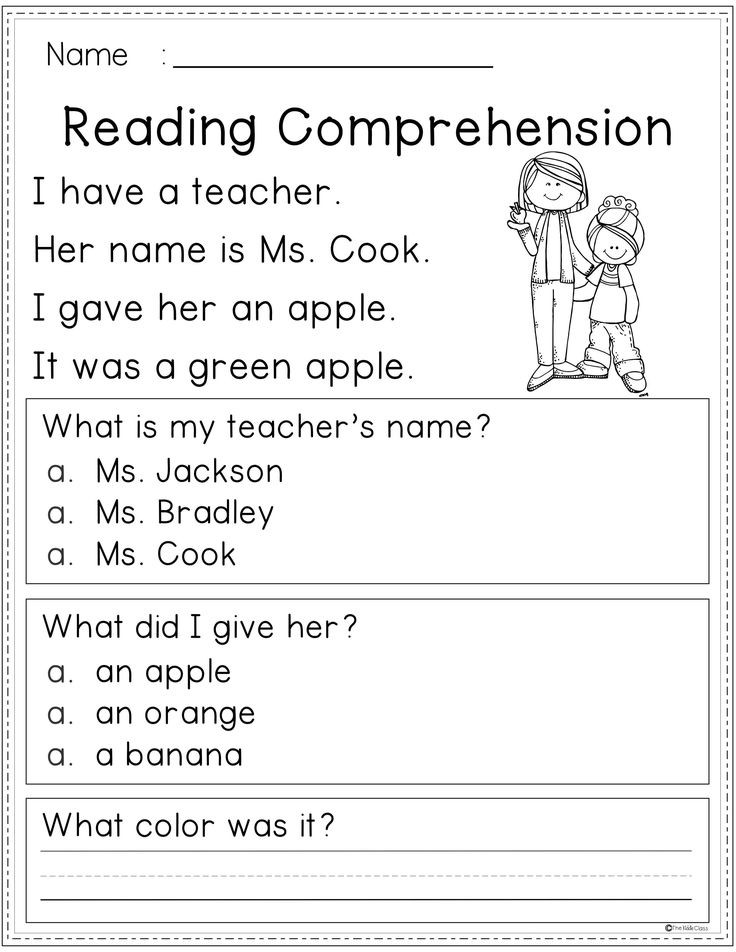 Squirrel! The squirrel has a fluffy tail. She looks with intelligent eyes. The squirrel is waiting for a treat. Misha hands her a nut. The animal is happy. And now her fluffy tail flashed on the tree. (44 words)
Squirrel! The squirrel has a fluffy tail. She looks with intelligent eyes. The squirrel is waiting for a treat. Misha hands her a nut. The animal is happy. And now her fluffy tail flashed on the tree. (44 words) Questions:
- Who was walking in the park?
- Who did Misha meet?
- What did the boy treat the squirrel to?
Brave men
The boys went to school. Suddenly a dog jumped out. She barked at the guys. The boys started to run. Only Borya remained standing still. The dog stopped barking and approached Borya. Borya stroked her. Then Borya calmly went to school, and the dog quietly followed him. (44 words)
Questions:
- Where were the guys going?
- What happened on the way?
- How did the boys behave?
- What did Borya do?
Sly fish
For a long time I sat with a fishing rod on the shore.
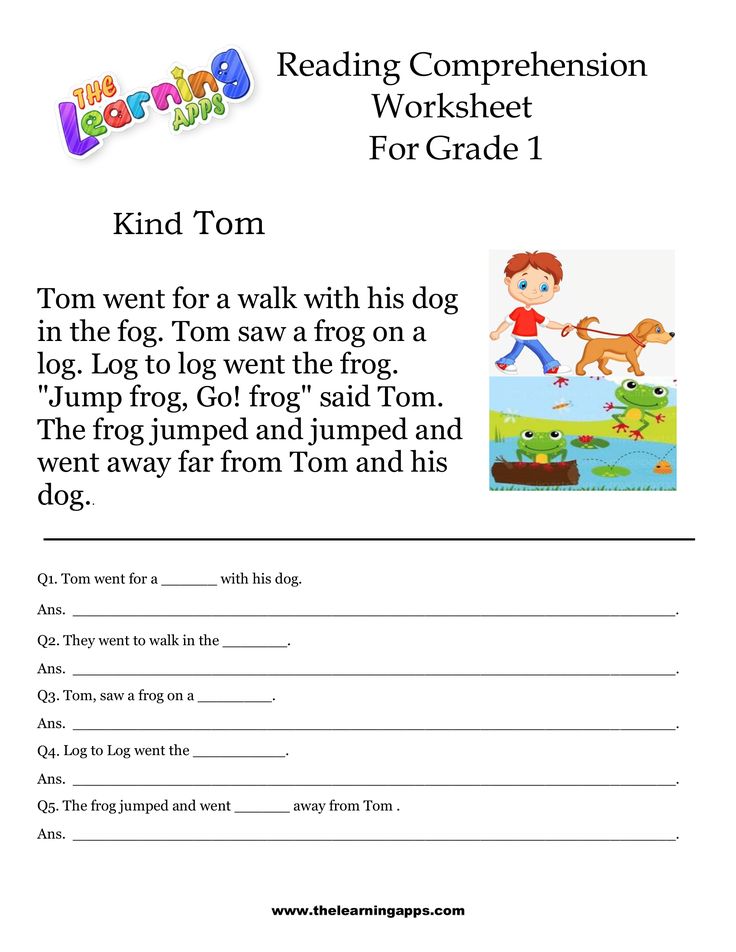 Minnows do not peck at me. And grandfather is sitting under a bush and has already caught a bucket. I sat down in the shade. Immediately the minnows began to peck. It turns out that in a clean place the shadow of the fishing rod is visible. So the cunning fish did not go to the hook. (48 words) (According to E. Shim)
Minnows do not peck at me. And grandfather is sitting under a bush and has already caught a bucket. I sat down in the shade. Immediately the minnows began to peck. It turns out that in a clean place the shadow of the fishing rod is visible. So the cunning fish did not go to the hook. (48 words) (According to E. Shim) Questions :
- Where did grandfather fish?
- Why was he fishing?
- Why didn't the boy bite the fish at first?
Cockerel
A cockerel walks around the yard: a red comb on its head, a red beard under its nose. Petya's tail is a wheel, there are patterns on the tail, spurs on the legs. Petya found a grain. He calls a hen with chickens. They did not share the grain - they fought. Petya the cockerel reconciled them: he ate the grain himself, waved his wings, shouted at the top of his voice: “Ku-ka-re-ku!” (49words)
Questions:
- Where does the cockerel go?
- What did the cockerel find?
- Who did he call?
- Why did the chickens fight?
Bats
Bats are very useful animals.
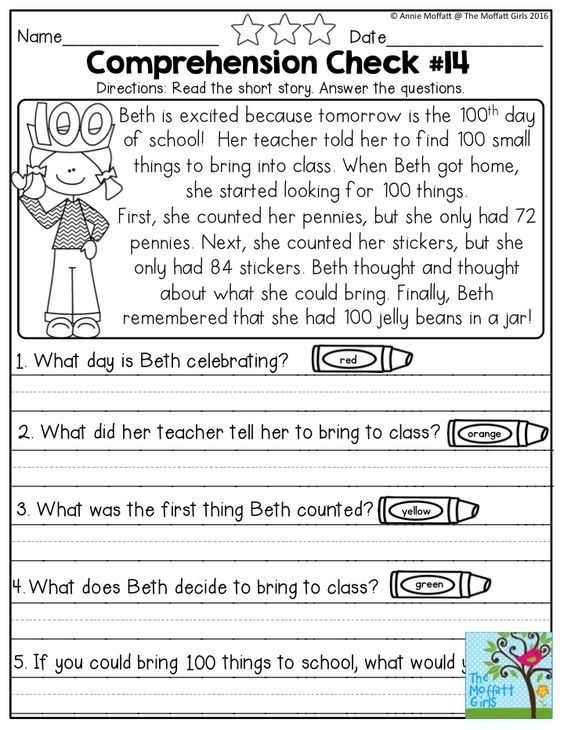 They eat harmful insects. During the day, bats wrap their wide wings like cloaks and hang upside down in dark places. The night is coming. They fly out to hunt. Many harmful insects fly at night. Almost all birds sleep at this time. Therefore, the "work" of bats is especially important. nine0084 (51 words) (According to Yu. Dmitriev)
They eat harmful insects. During the day, bats wrap their wide wings like cloaks and hang upside down in dark places. The night is coming. They fly out to hunt. Many harmful insects fly at night. Almost all birds sleep at this time. Therefore, the "work" of bats is especially important. nine0084 (51 words) (According to Yu. Dmitriev) Questions:
- What are the benefits of bats?
- How do bats sleep?
- When do bats hunt?
Ducks
Vasya is sitting on the bank. He watches how the ducks swim in the pond: they hide their wide spouts in the water. Vasya does not know how to drive the ducks home. Vasya began to call the ducks: “Ooty-ooty-ducks! The noses are wide, the paws are webbed! Stop dragging worms, pinching grass - it's time for you to go home. Ducks Vasya obeyed, went ashore, go home. (52 words) (according to K. Ushinsky)
Questions:
- What did Vasya do on the beach?
- What kind of nose do ducks have?
- What did Vasya call the ducks?
- What did the ducks do?
Winter
Frost bound the earth.
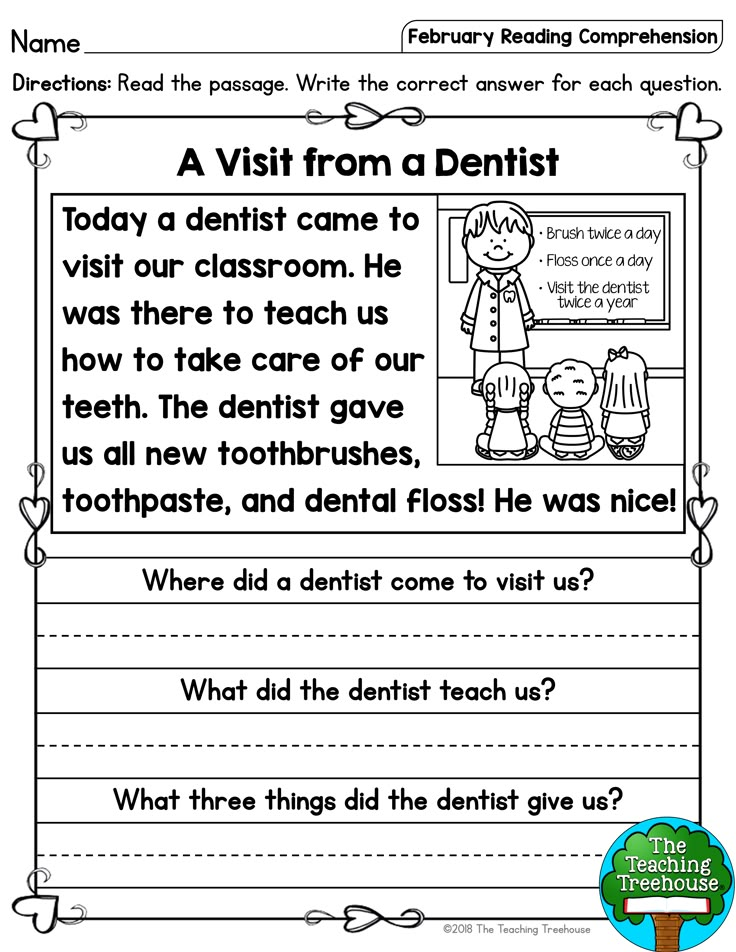 Rivers and lakes are frozen. Everywhere lies white fluffy snow. Children are happy with winter. It's nice to ski on fresh snow. Matvey and Lera are playing snowballs. Andrei and Sasha are making a snowman. Only animals have a hard time in the winter cold. Birds fly closer to housing. Guys, help our little friends in winter. Make bird feeders! (55 words)
Rivers and lakes are frozen. Everywhere lies white fluffy snow. Children are happy with winter. It's nice to ski on fresh snow. Matvey and Lera are playing snowballs. Andrei and Sasha are making a snowman. Only animals have a hard time in the winter cold. Birds fly closer to housing. Guys, help our little friends in winter. Make bird feeders! (55 words) Questions:
- Who is happy about winter?
- Who has it hard in winter?
- How can you help the birds?
Four butterflies
It was spring. The sun shone brightly. Flowers grew in the meadow. Four butterflies were flying above them: a red butterfly, a white butterfly, a yellow butterfly, and a green butterfly. Suddenly, a large black bird flew in. She saw butterflies and wanted to eat them. The butterflies got scared and sat on the flowers. A white butterfly sat on a chamomile. Red butterfly - on poppy. Yellow - on a dandelion, and green hid behind a leaf of a tree.
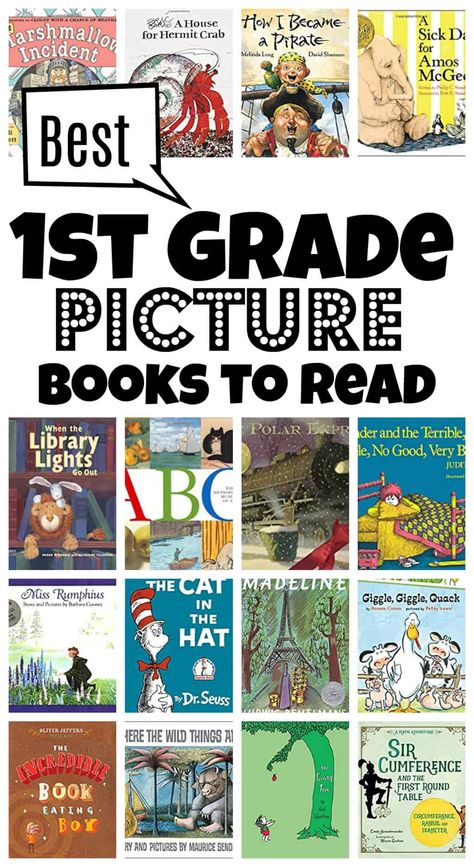 A bird flew, flew, but did not see butterflies. (56 words)
A bird flew, flew, but did not see butterflies. (56 words) Questions:
- What butterflies flew over the flowers?
- Why didn't the bird see butterflies?
If the child's reading technique is below the norm, then it is necessary to read a lot (which is very difficult with poor reading quality) and does not always bring results. It is better to use special techniques and exercises, because. The reasons for bad reading can be different.
Slow readers and children who are struggling to improve their reading speed can be helped by using syllabary reading or, much more effectively, by using an integrated approach that includes various professional techniques. nine0003
To do this, I suggest you use the books:
THE BIG BOOK OF SYLLING TABLES is
- a ready-made tool for training reading and speed reading skills;
- 200 syllabic tables of different levels of complexity;
- professional spreadsheet technique.

The most effective methods will allow each table to be used repeatedly several times, increasing the child's interest in reading. nine0003
Working with these syllabic tables the child will receive:
- improvement in reading skills;
- reading speed increase;
- improved diction;
- reading comprehension;
- development of thinking and attention;
- expansion of vocabulary;
- increased self-confidence.
The child will stop stumbling over difficult words while reading. The reading process will become natural and painless. nine0003
You can easily print the pages you need. All pages of the book can be used separately.
THE BIG BOOK OF SAYLING CHARTS is suitable for those who are just taking their first steps in reading, and for those who want to significantly improve the quality of reading.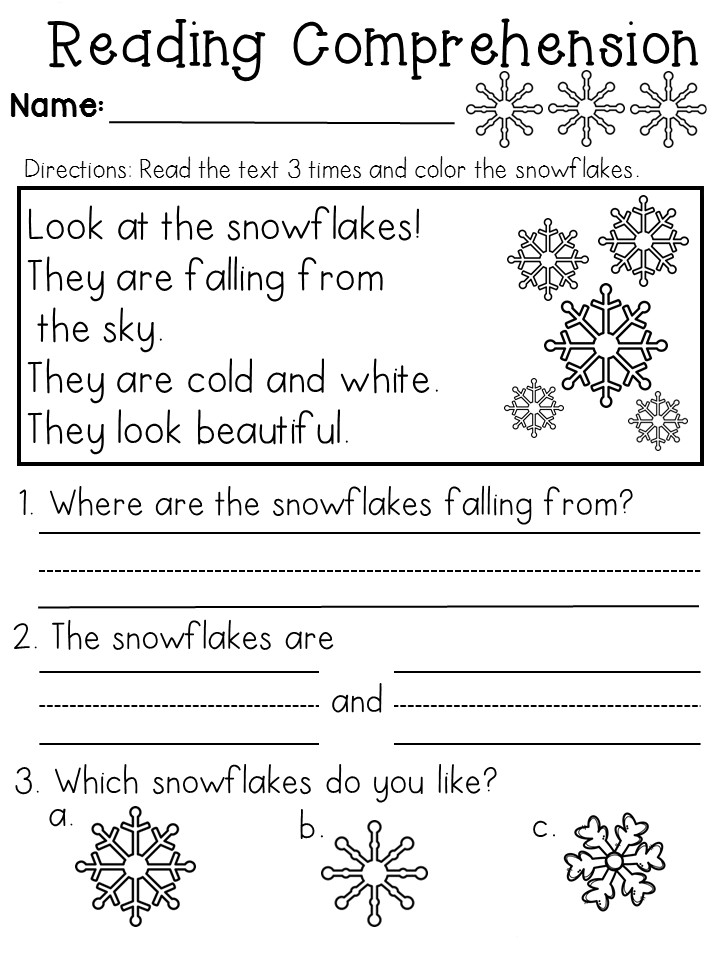
Syllabaries help children develop their speed reading skills. But it often happens that a child gets stuck at a reading speed of 10-20 words per minute. It is important to track this moment in time and start immediately performing the necessary exercises. nine0003
I have created a training that will help you overcome this barrier without much difficulty. It is convenient to use both at home and when working with the whole class. A variety of tasks will not let children get bored, and parents and teachers will not have to select the necessary material for a long time and torment children with an exhausting, incredibly difficult process at this stage - reading.
Download TRAINING "Speed Reading and Speech Development"
Together with the training, you will receive a small book as a gift - 20 syllabic tables for practicing reading skills (they do not repeat the tables of a large book). nine0339
Reading texts grade 1 print with tasks
O.
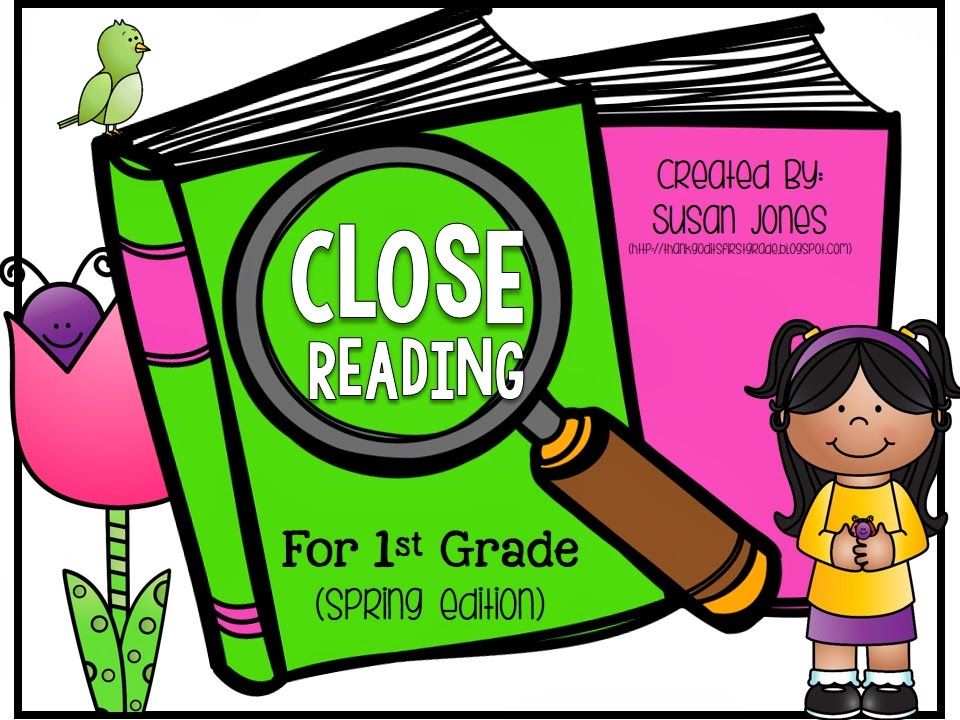 Naumova "Noisy texts for reading and retelling"
Naumova "Noisy texts for reading and retelling"
The skill of high-quality reading and writing depends on the state of visual perception and attention of the child.
The better the child recognizes visual images, the better he reads and writes more competently.
Working with noisy texts engages the child's brain to the maximum and increases the productivity of classes many times over. At the same time, there is a development of figurative thinking, attention, memory, the ability to understand what is read. nine0084
In the book you will find:
- Noisy texts with questions;
- Texts with questions for reading, retelling, checking reading technique;
- Method of working with noisy texts;
- High productivity options;
- Exercises for the development of speech and reading comprehension.
As a result, the child:
- read speed increases;
- attention and memory develop;
- conscious reading skills are developed;
- develop self-control skills;
- speech develops;
- the number of writing errors decreases;
- the process of writing summaries and essays is facilitated;
- improving academic performance.
